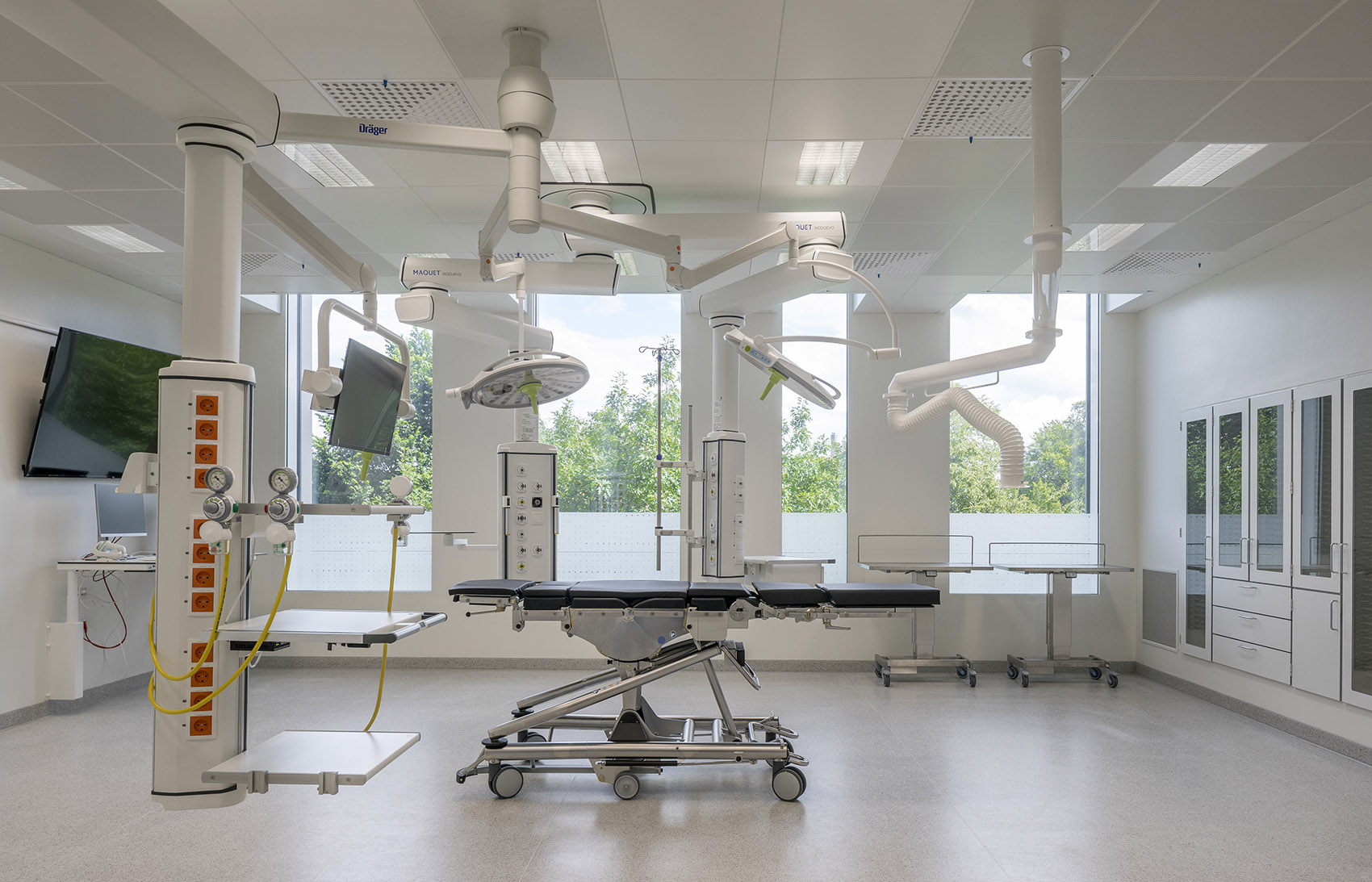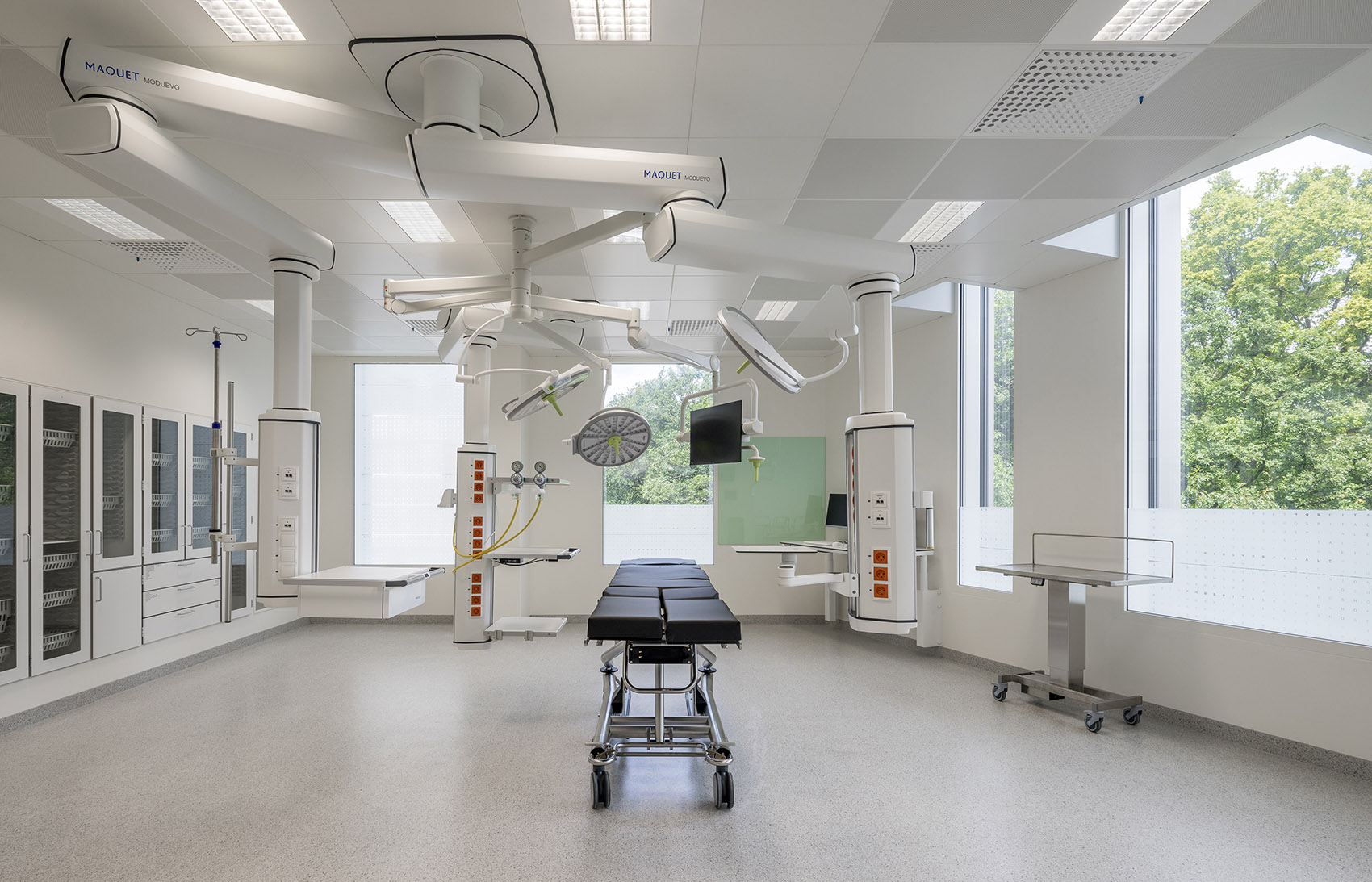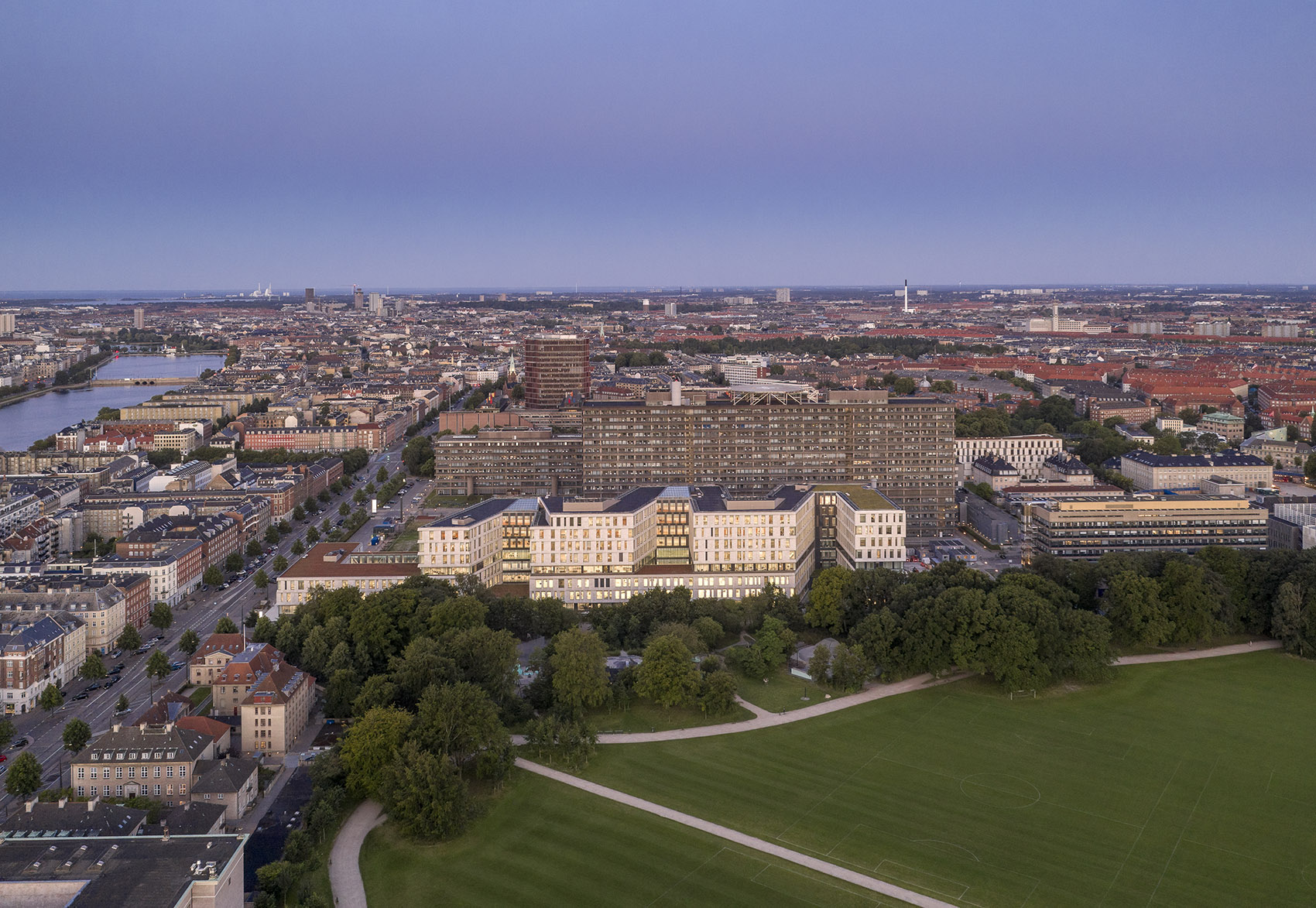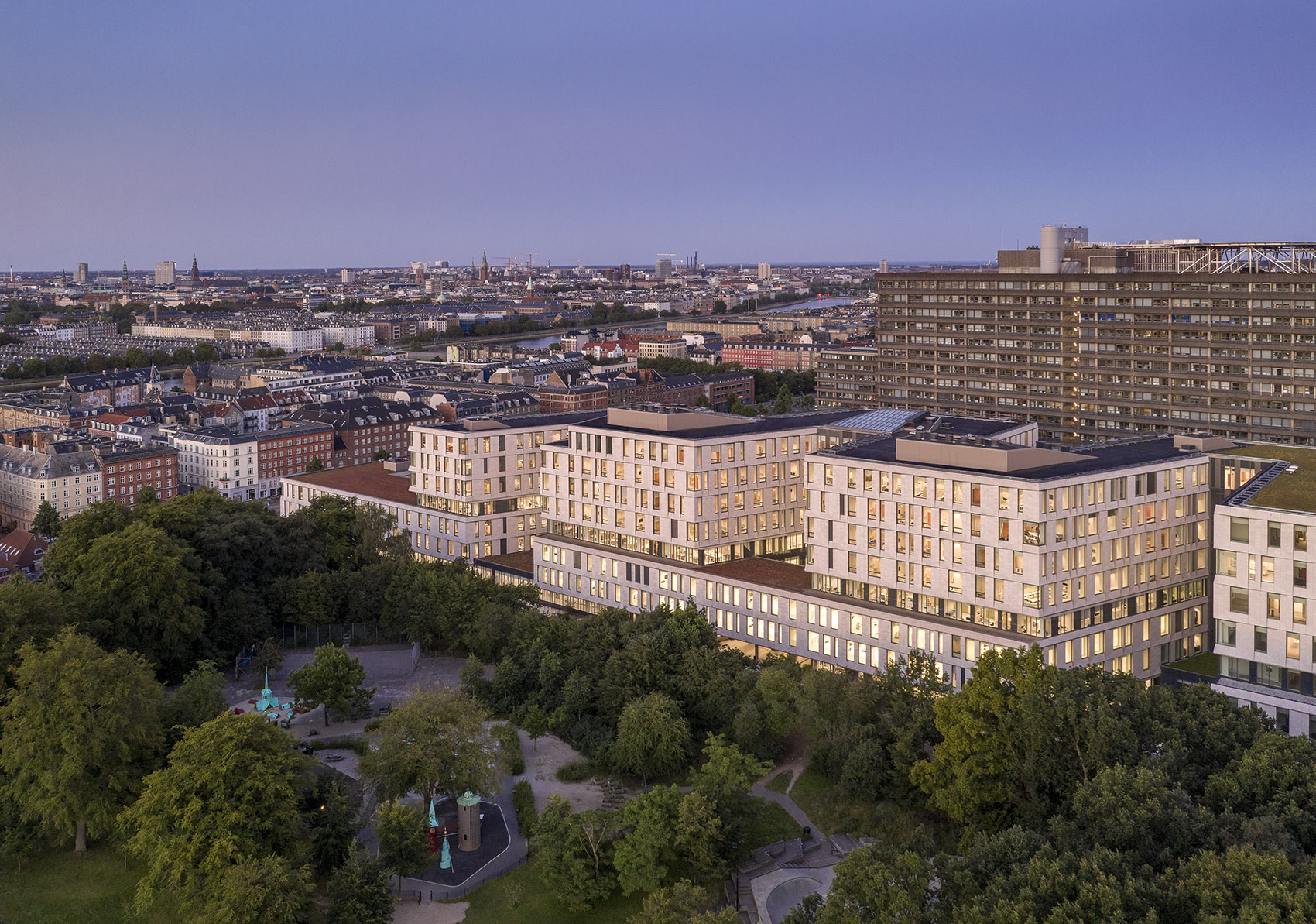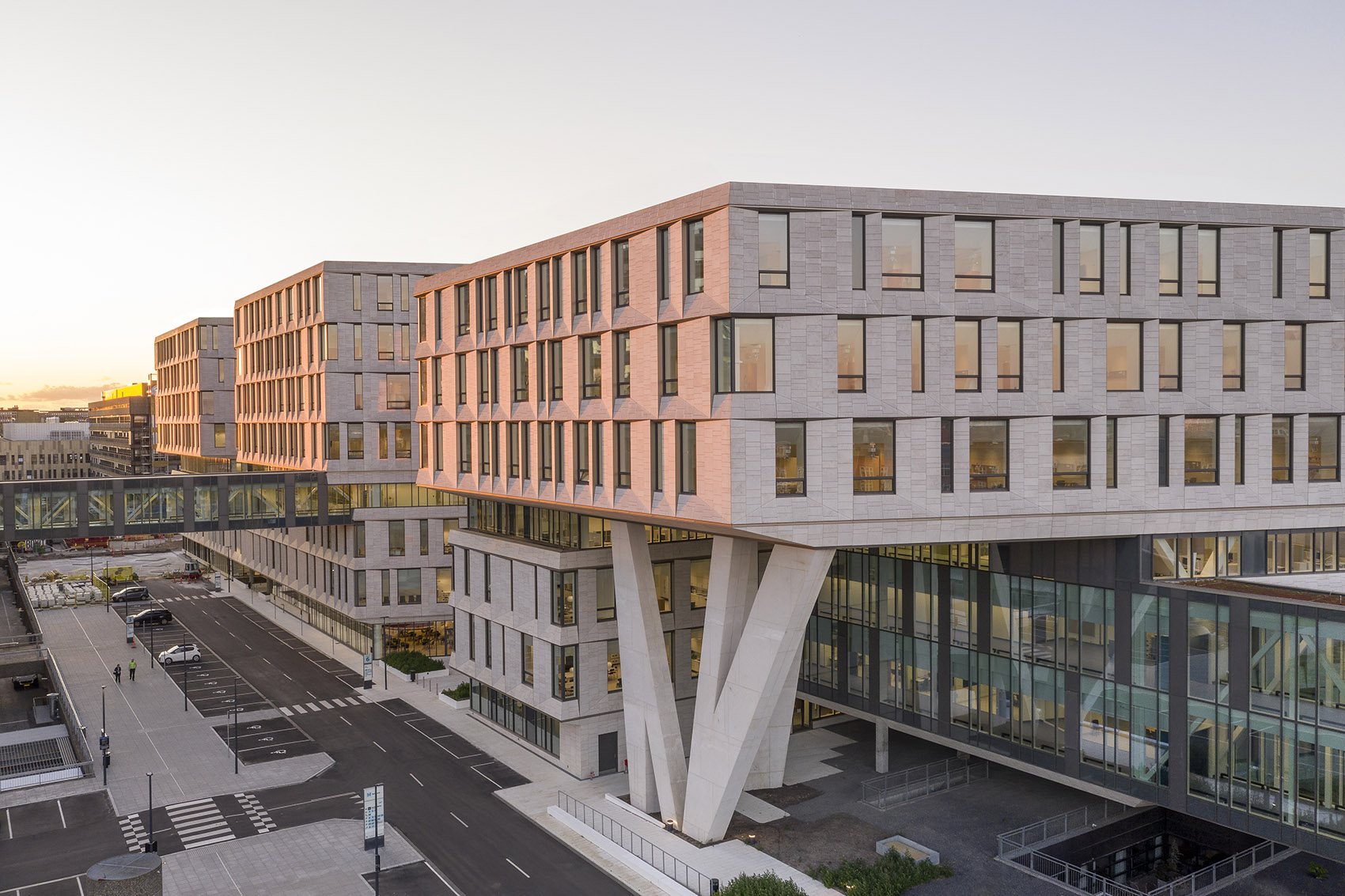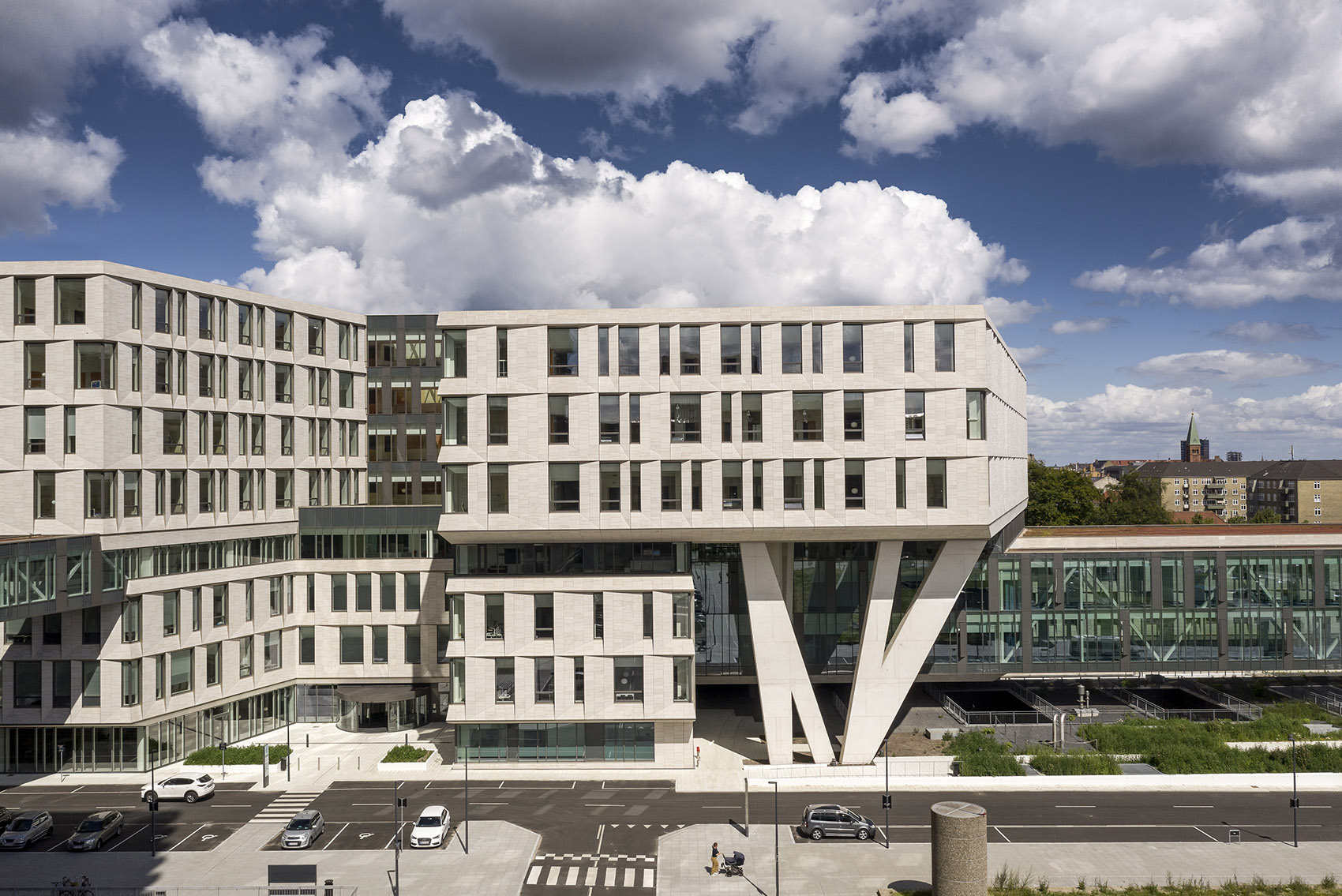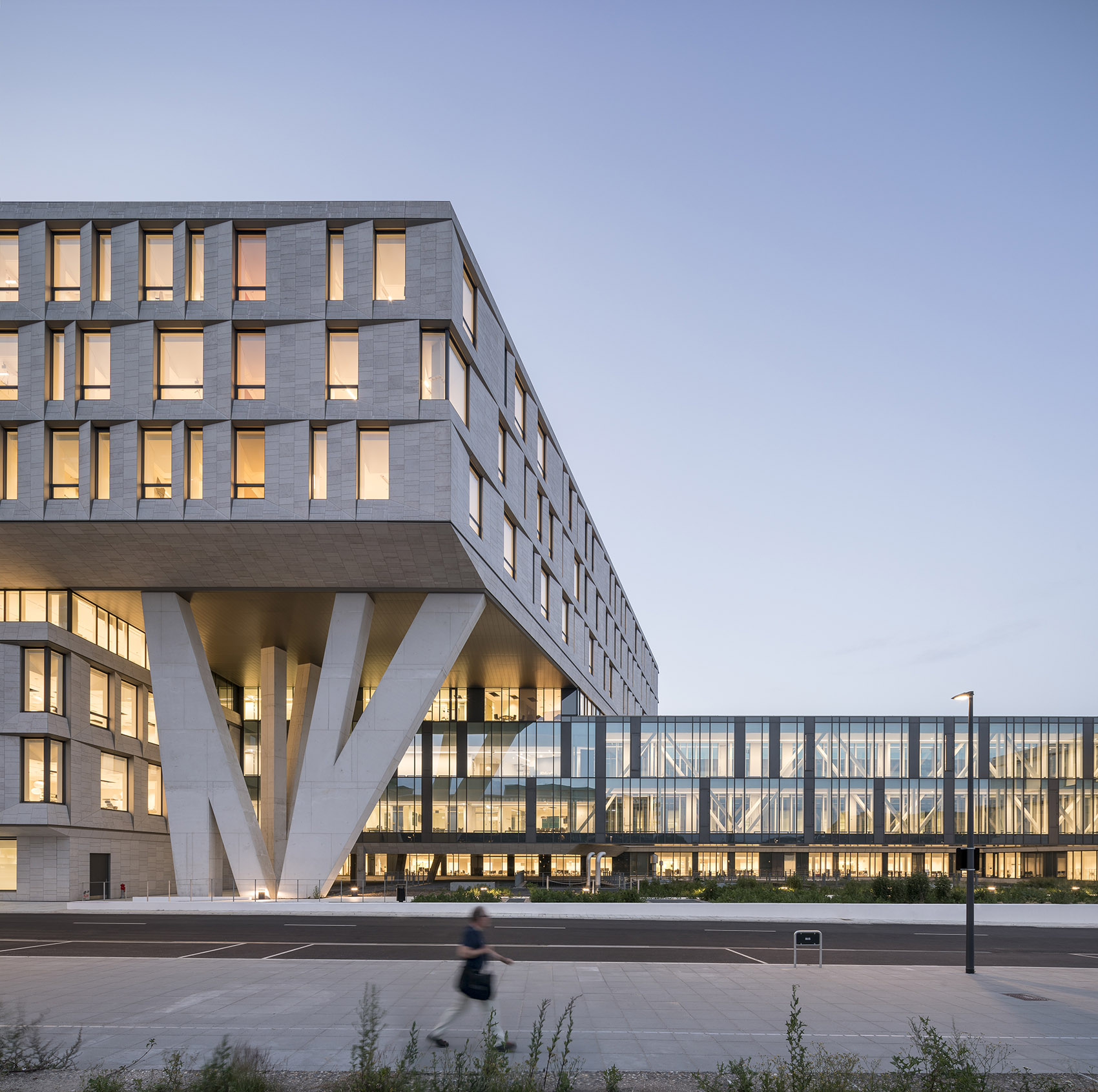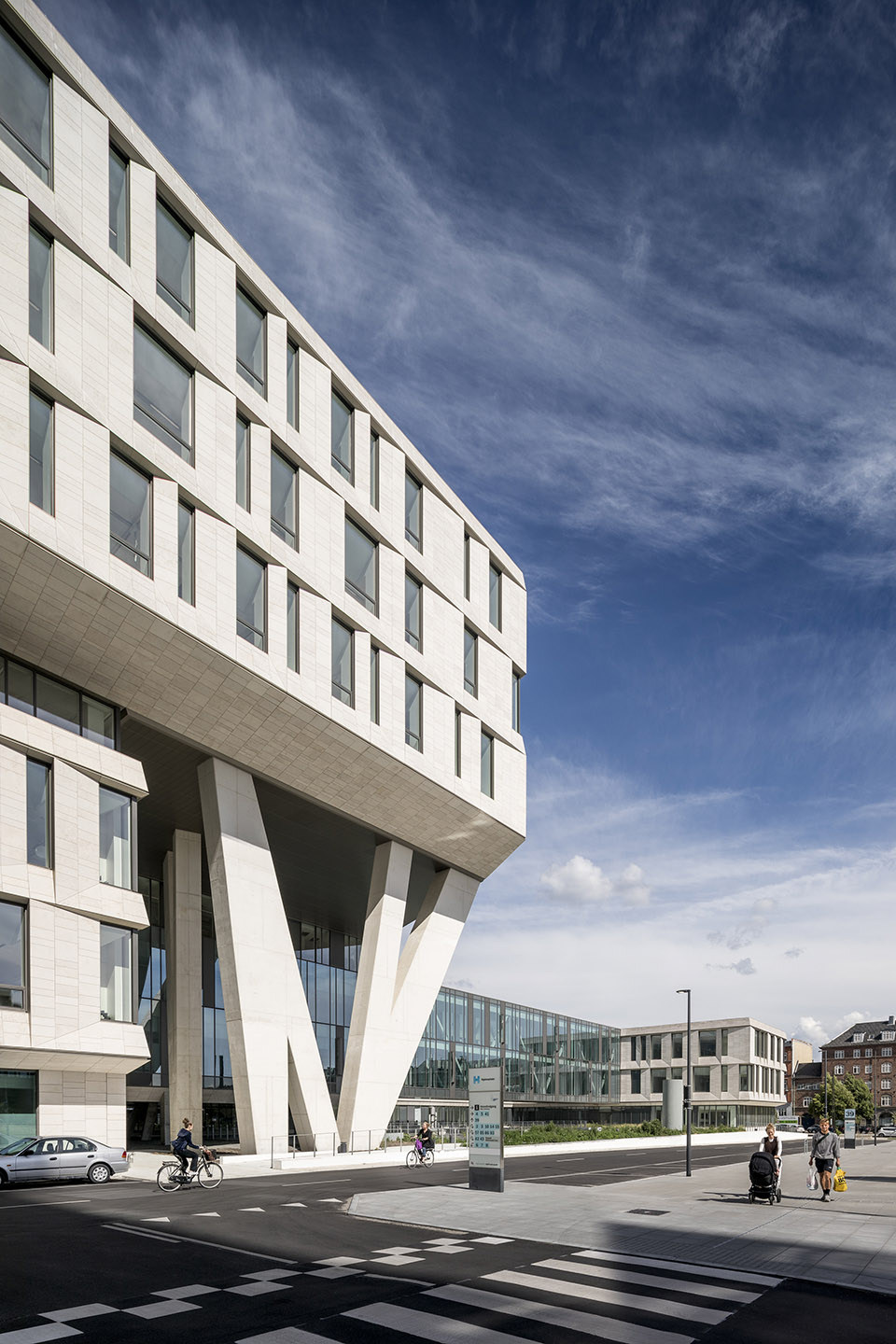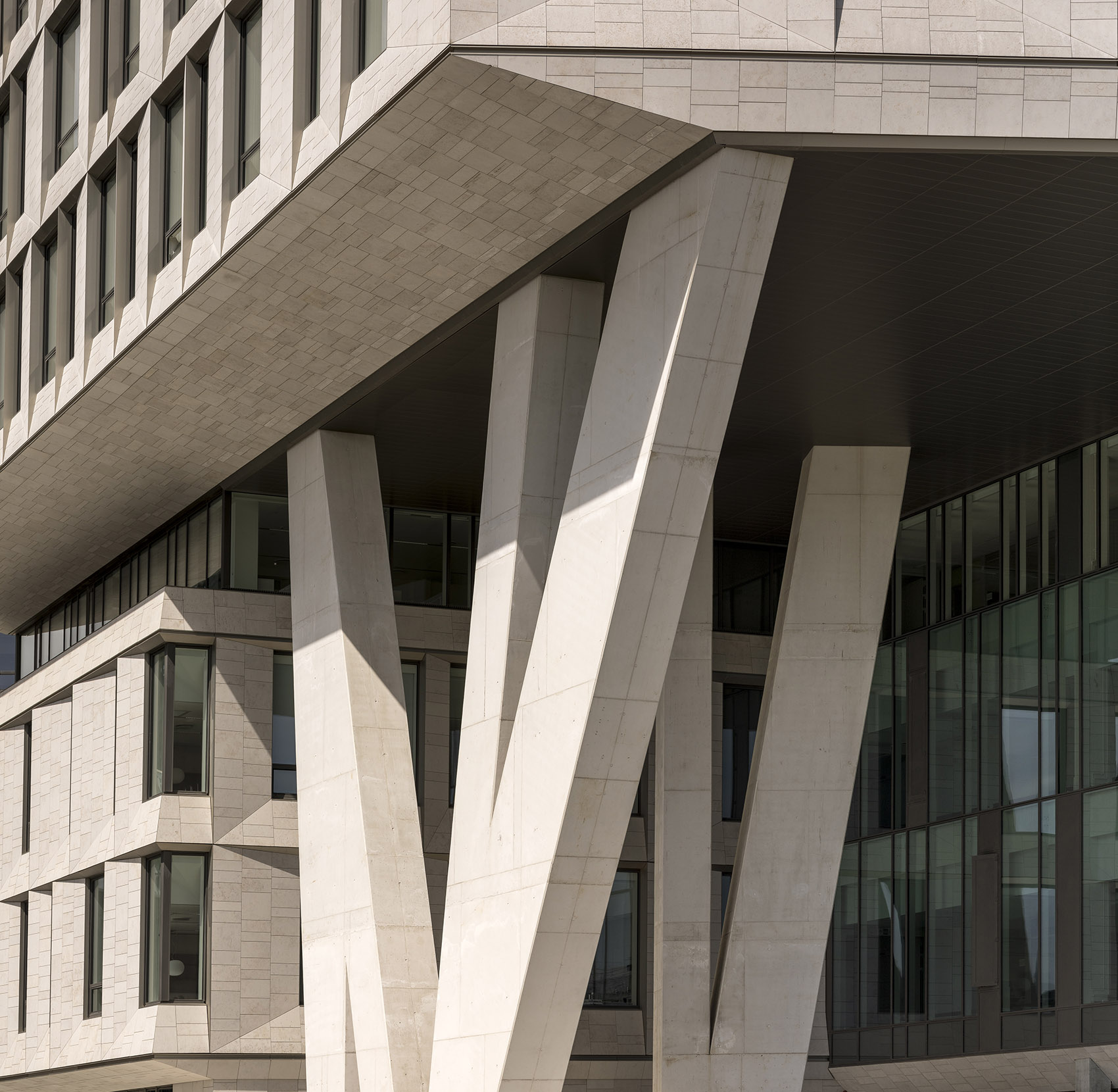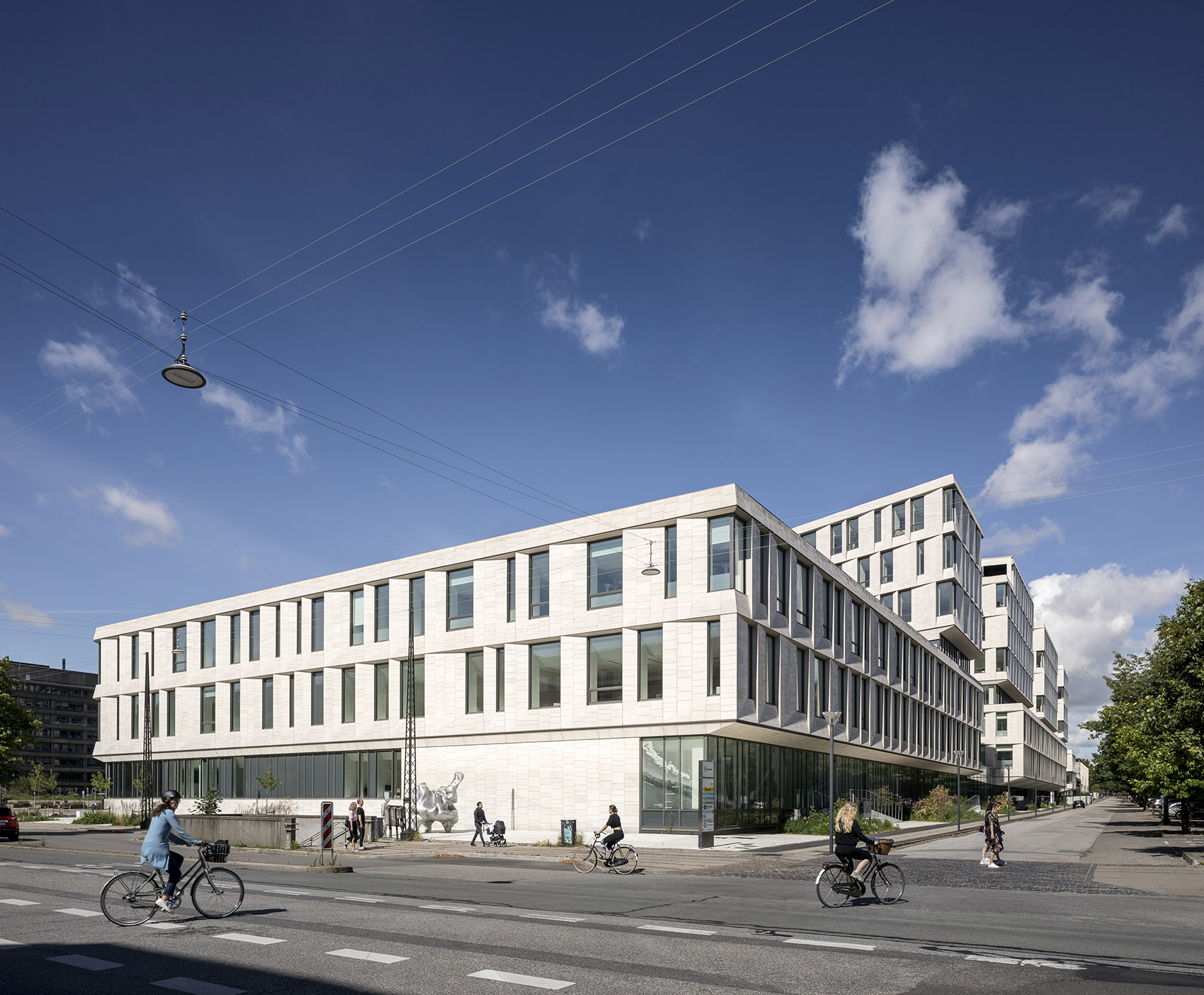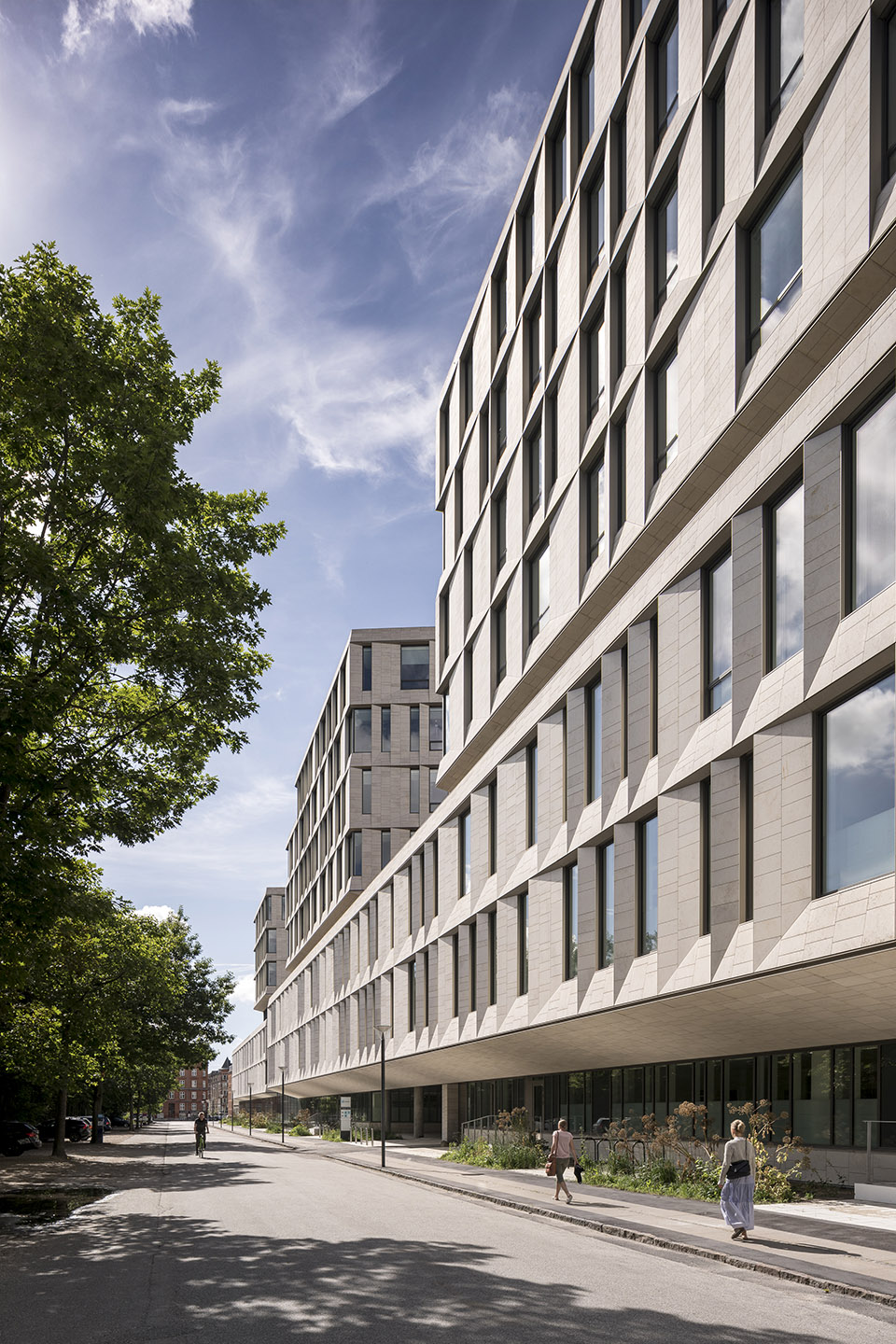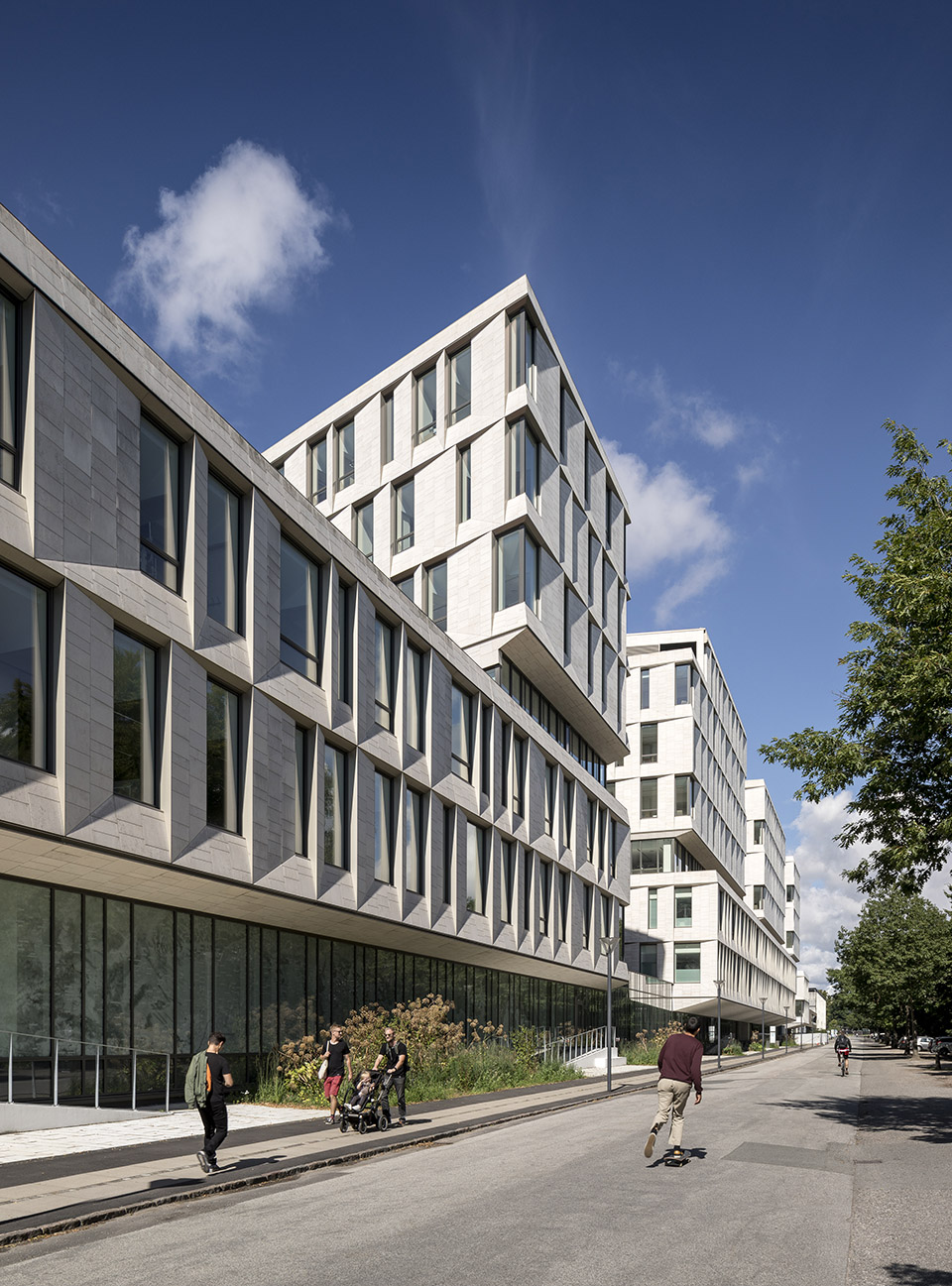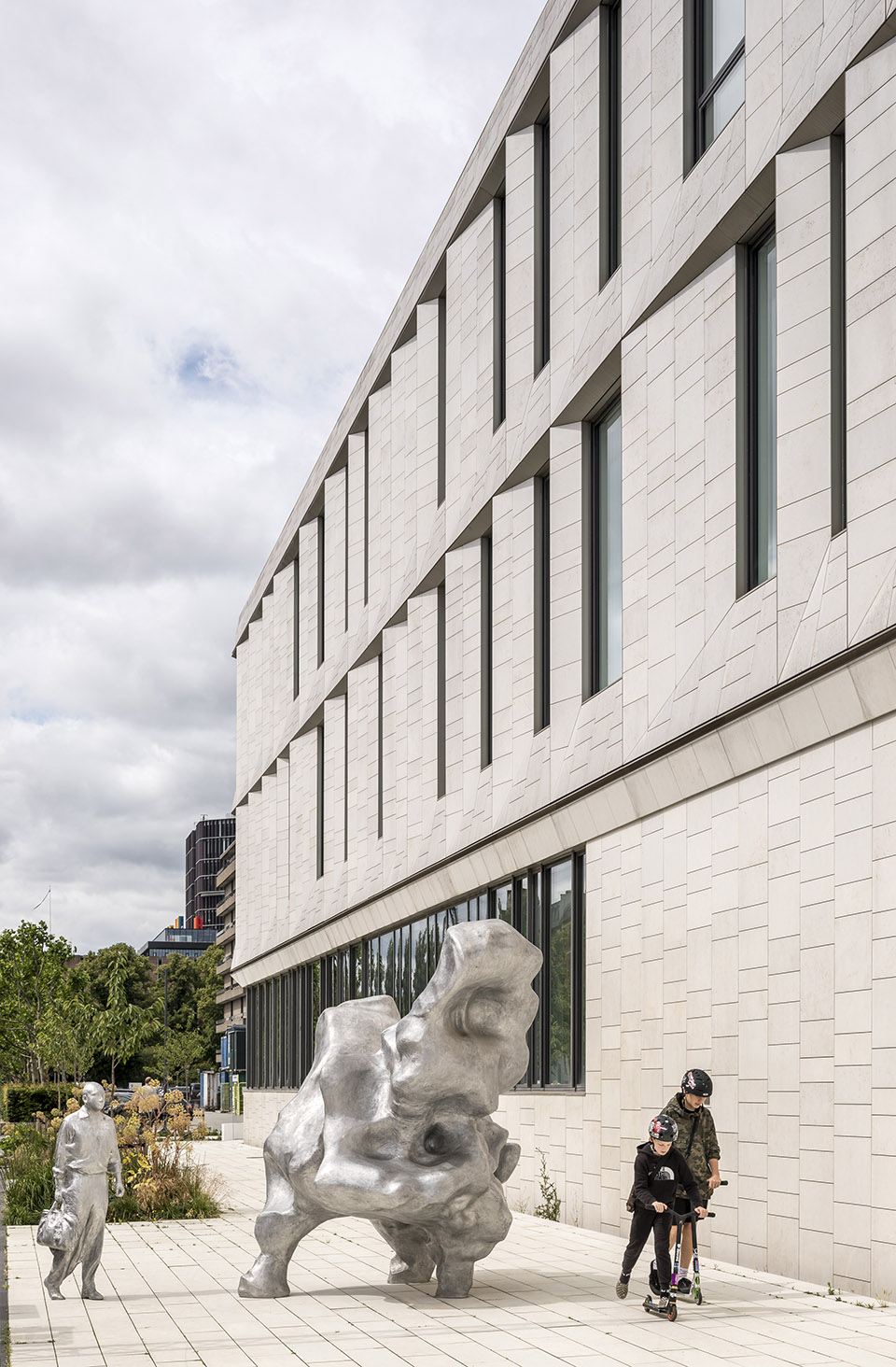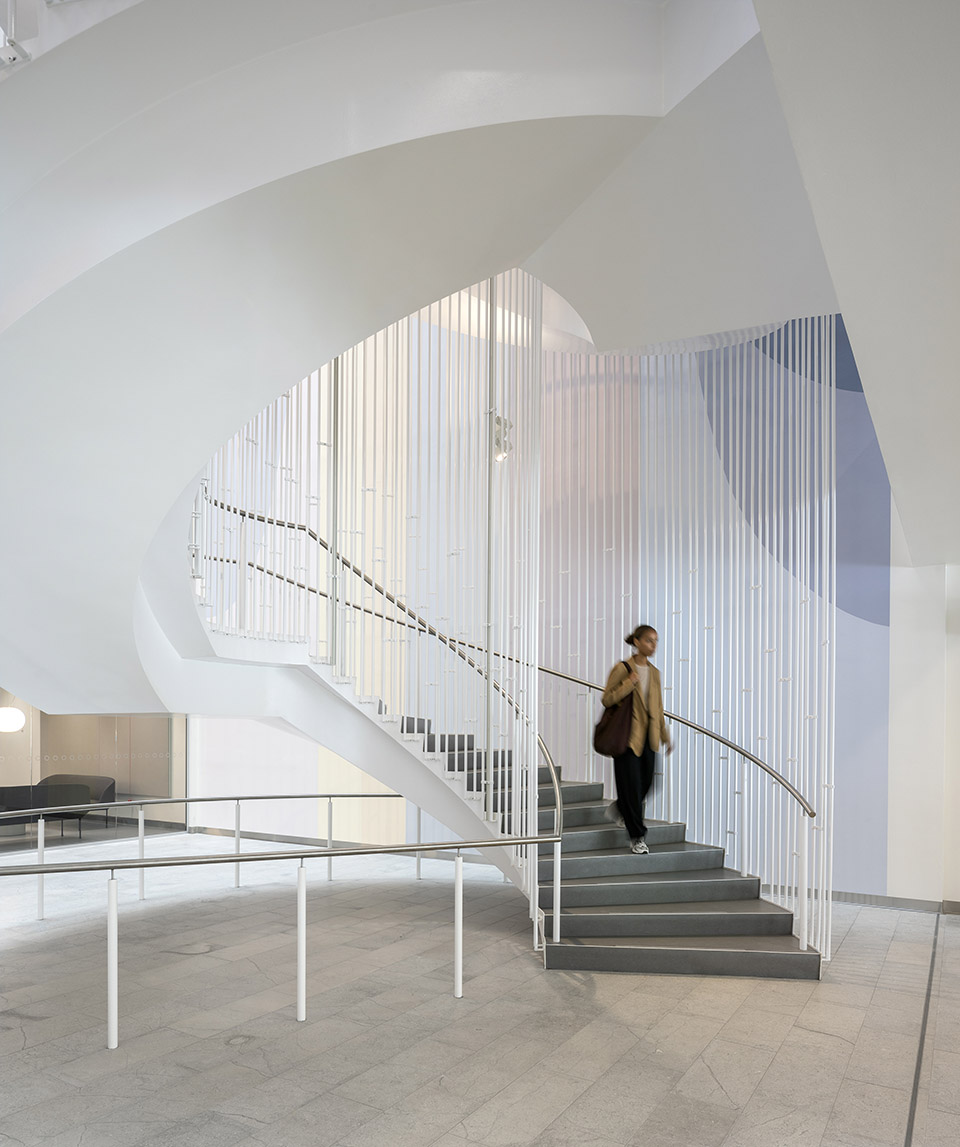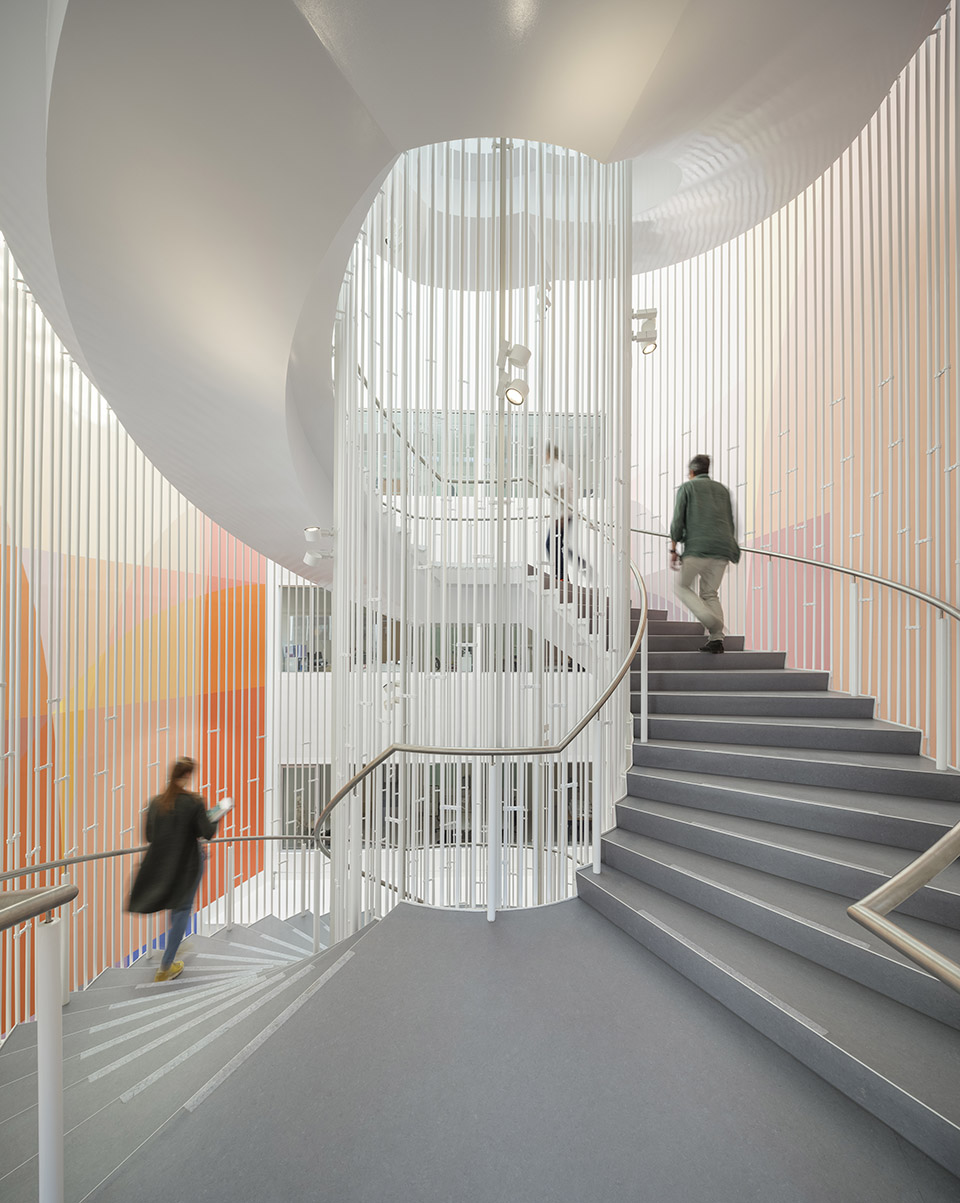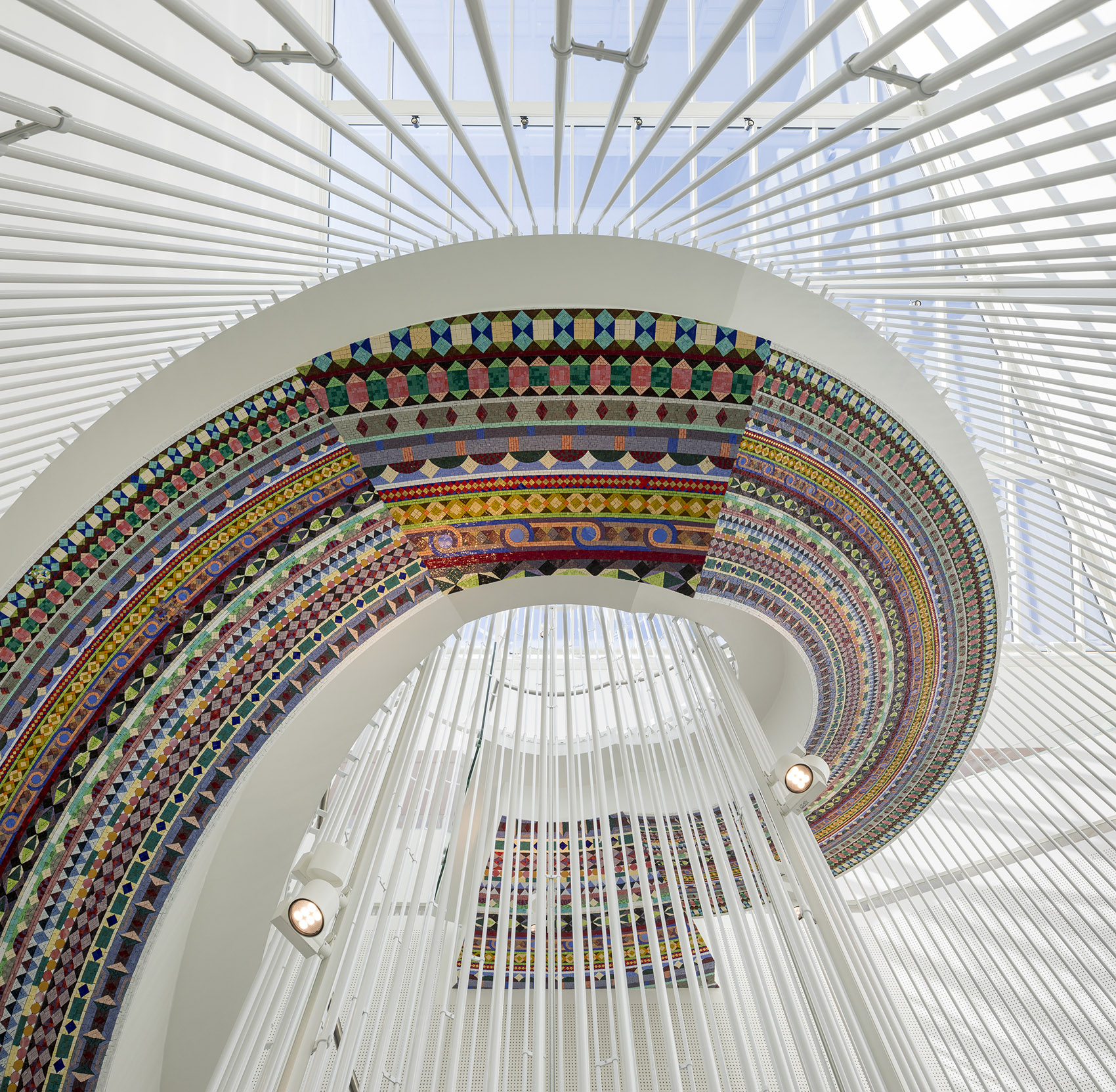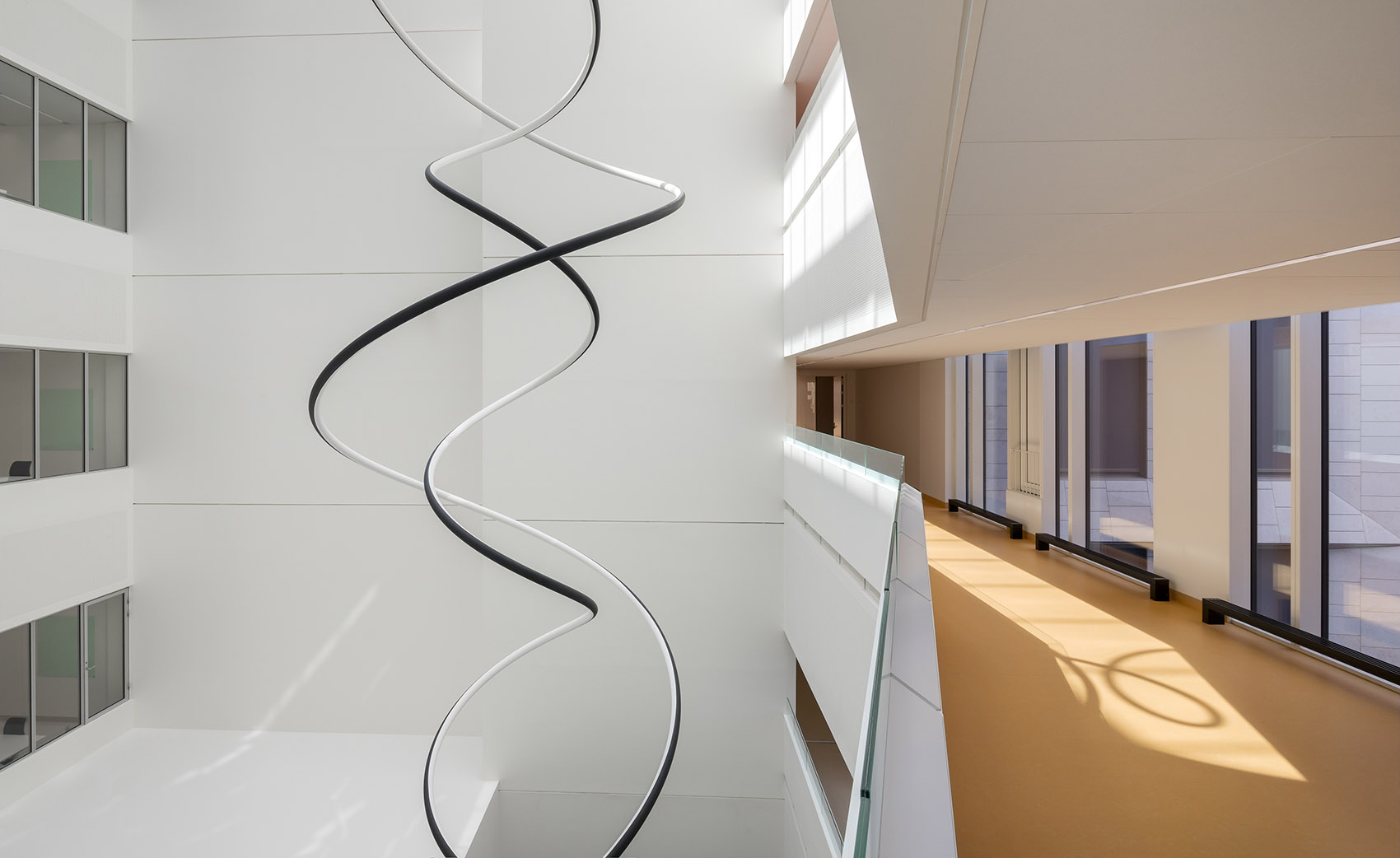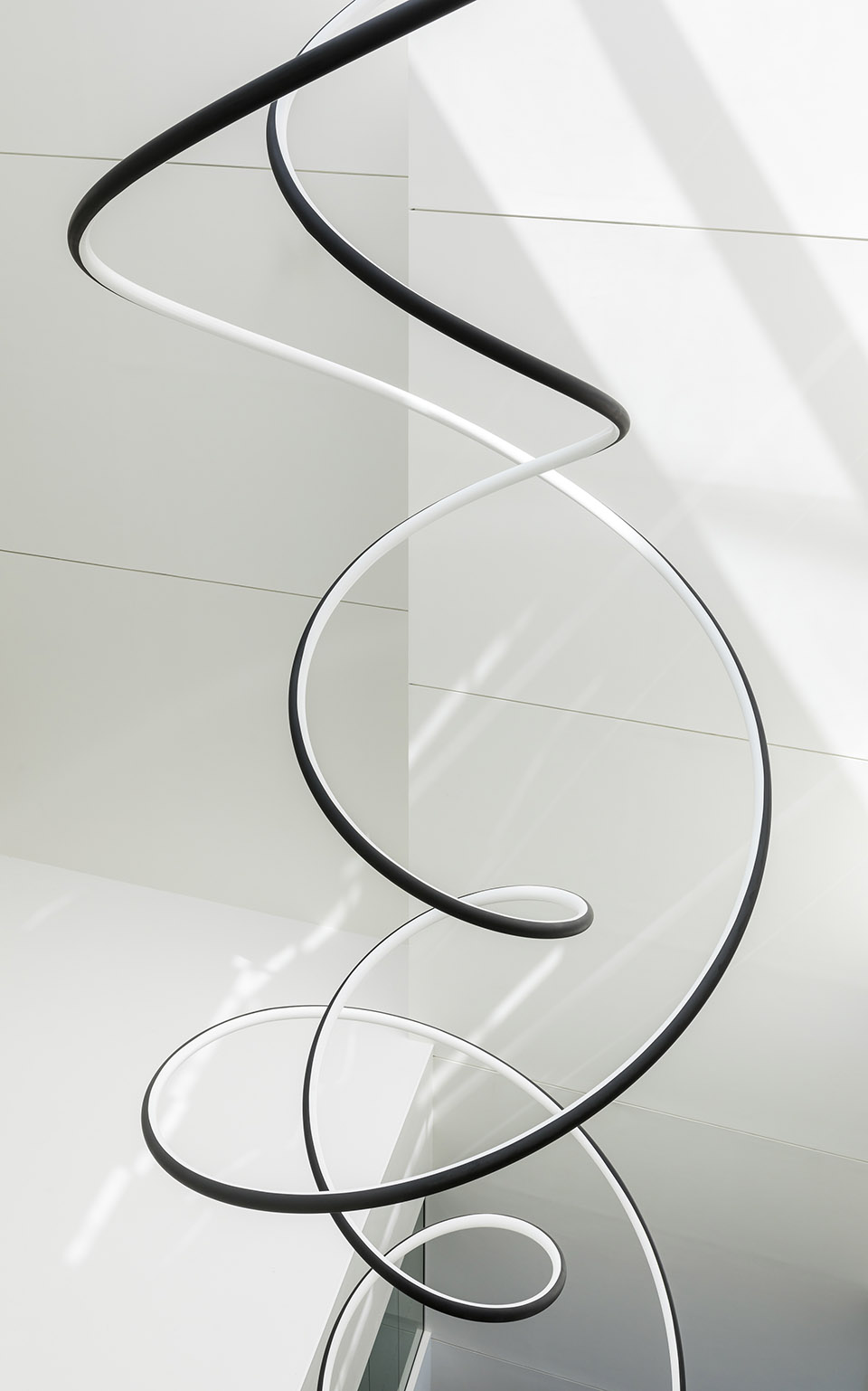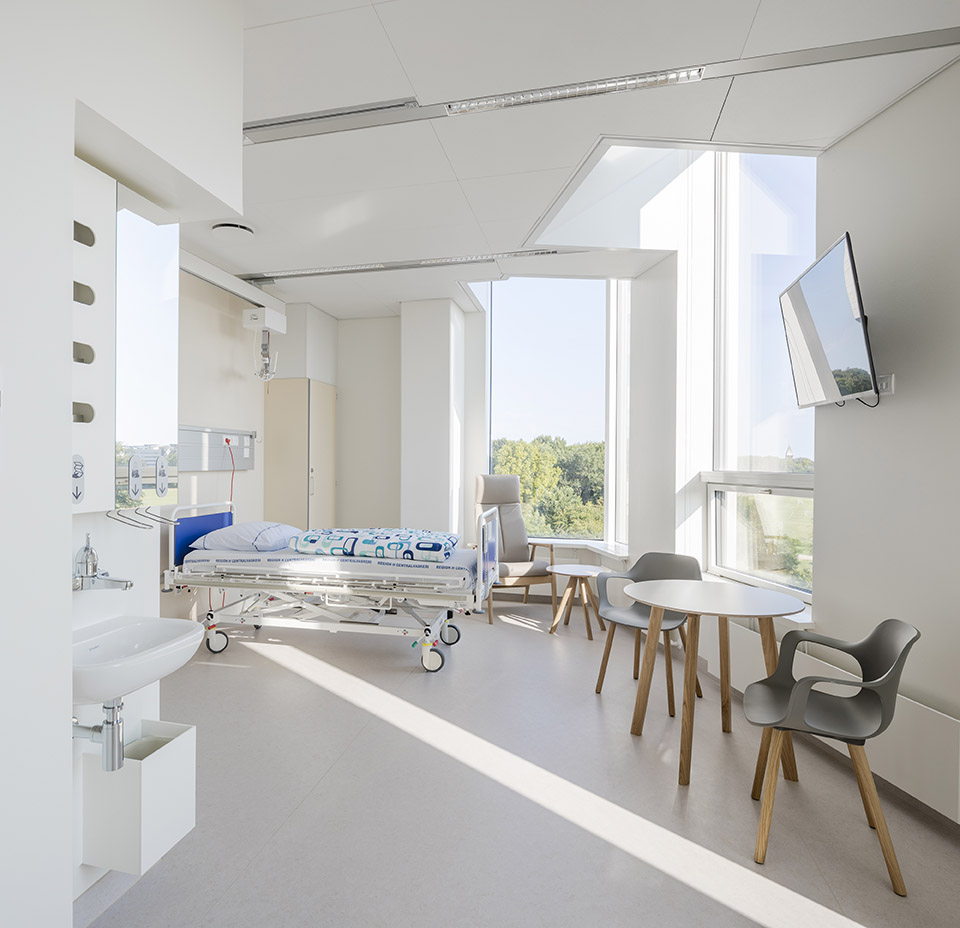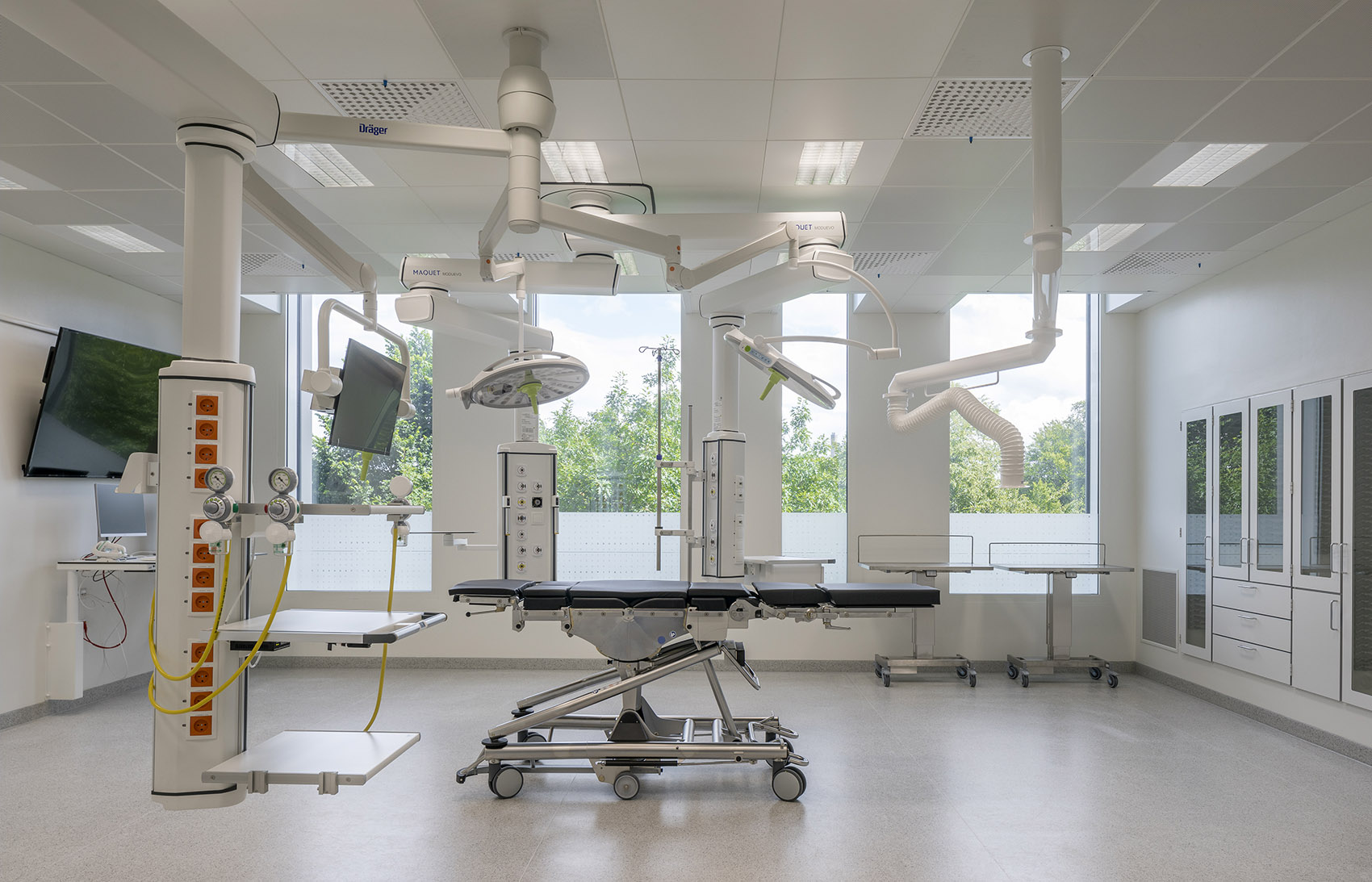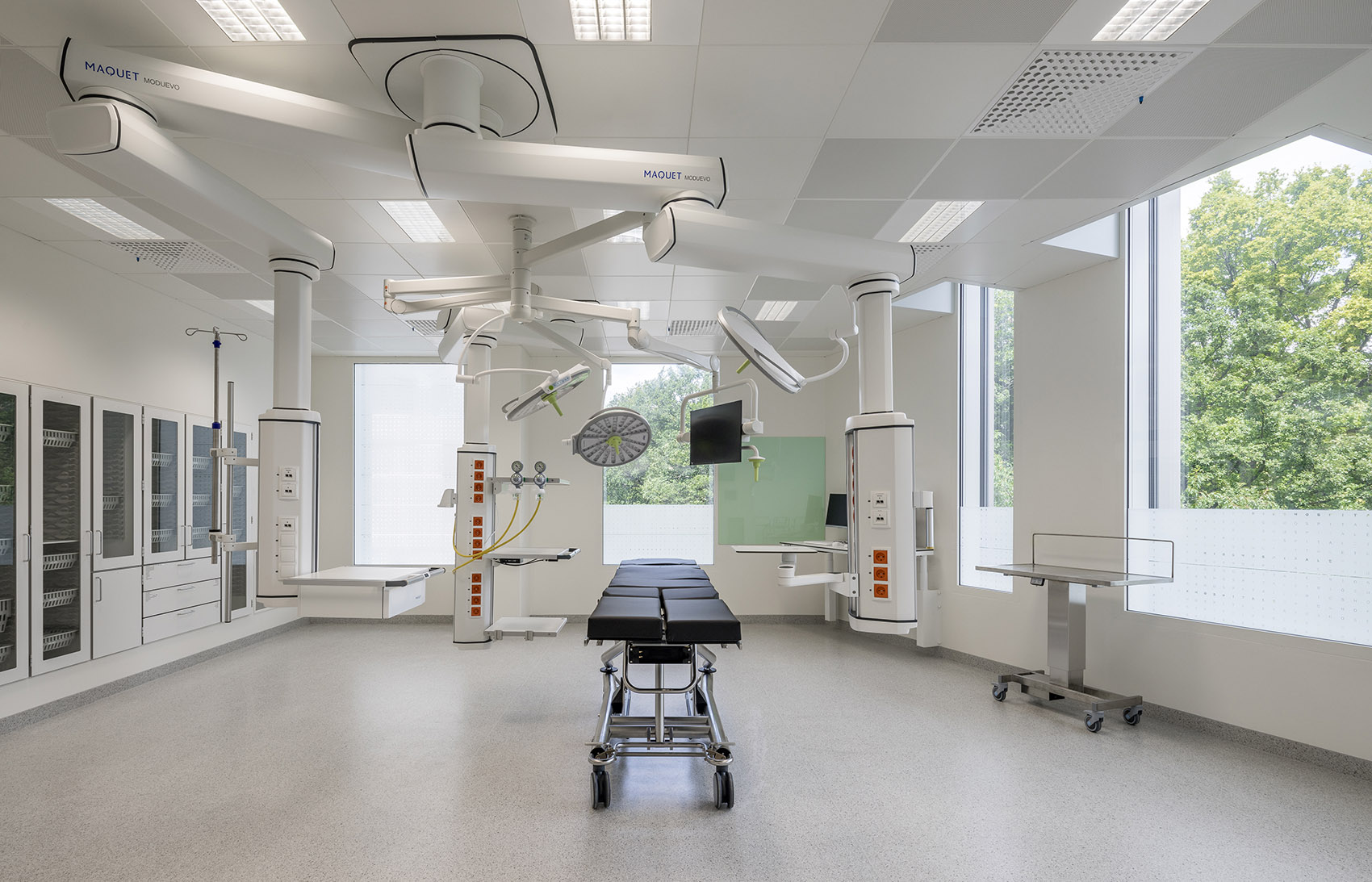Rigshospitalet是哥本哈根最大的医院,建筑师为其扩建了北翼,面积达54000平方米,是医院中最大的扩建空间。其中包含超过200间病房,手术室,一间重症监护室,以及门诊诊所。设计首要关注的是病人的健康和康复,满足专业治疗的需求,并且适应未来的医院功能。Rigshospitalet医院新的北翼建筑旨在优化医院的功能,提高员工的效率,帮助每位病人恢复健康。新建筑共有七层楼高,提供了209间病房,其中196间为包含私人浴室的单人间;另外还有33间手术室,一间重症监护室,门诊诊所,影像室,研究室等。LINK,3XN,以及工程公司Sweco紧密合作,共同设计完成了此项目。其他合作者还包括景观设计师Kristine Jensen Tegnestue和德国建筑事务所Nickl & Partner。
The 54,000 m2 North Wing is the latest extension to Copenhagen’s largest hospital, Rigshospitalet. It features more than 200 patient rooms, operating rooms, an intensive care unit, and outpatient clinics. The guiding principles of the design are patient well-being and healing, the needs of healthcare professionals and future adaptability of the hospital functions. The new North Wing extension to Rigshospitalet aims to encourage the recovery of each patient, while optimising the efficiency and functionality of the hospital staff. The new wing is spread out over seven floors and offers a total of 209 patient rooms (196 are single rooms with private bathrooms), 33 operating rooms, an intensive care unit, outpatient clinics, diagnostic imaging functions, and research spaces. The design and layout of the North Wing are the result of a close collaboration between LINK arkitektur and 3XN, as well as the engineering firm Sweco. Additional contributors to the project include the landscape architect Kristine Jensen Tegnestue, and the German architect firm Nickl & Partner.
▼项目整体鸟瞰,aerial view of the project ©Adam Mørk

建筑师从心电图中汲取灵感,将北翼设计成折线形,一条路径如“主动脉”一般贯通整个空间。笔直的中央步道让员工可以轻松地从建筑的一段走到另一端,周围折线结构则形成了远离中央走道的安静区域以及病房,避免受到打扰。折现形式满足了各种各样的需求。它优化了员工流线,让医院中的人流更加通畅;同时,它让病人远离嘈杂的医院环境,能够在更加舒适并且有尊严的空间中慢慢恢复健康。
Inspired by the lines on a cardiogram graph, the North Wing is shaped as a zigzag, and is intersected by a main ‘artery’ route that runs through the entire wing. The straight, central walkway allows staff to navigate easily from one end of the building to the other, while the surrounding zigzag structure means quiet zones and patient rooms are located away from the central corridor, avoiding unnecessary disturbances. The zigzag form thus serves numerous purposes: it eases the flow through the hospital by optimising the staff’s circulation routes, while offering patients more comfort and dignity to recover away from the busy hospital environment.
▼建筑远景鸟瞰,呈折线形,aerial view of the building in zigzag form ©Adam Mørk
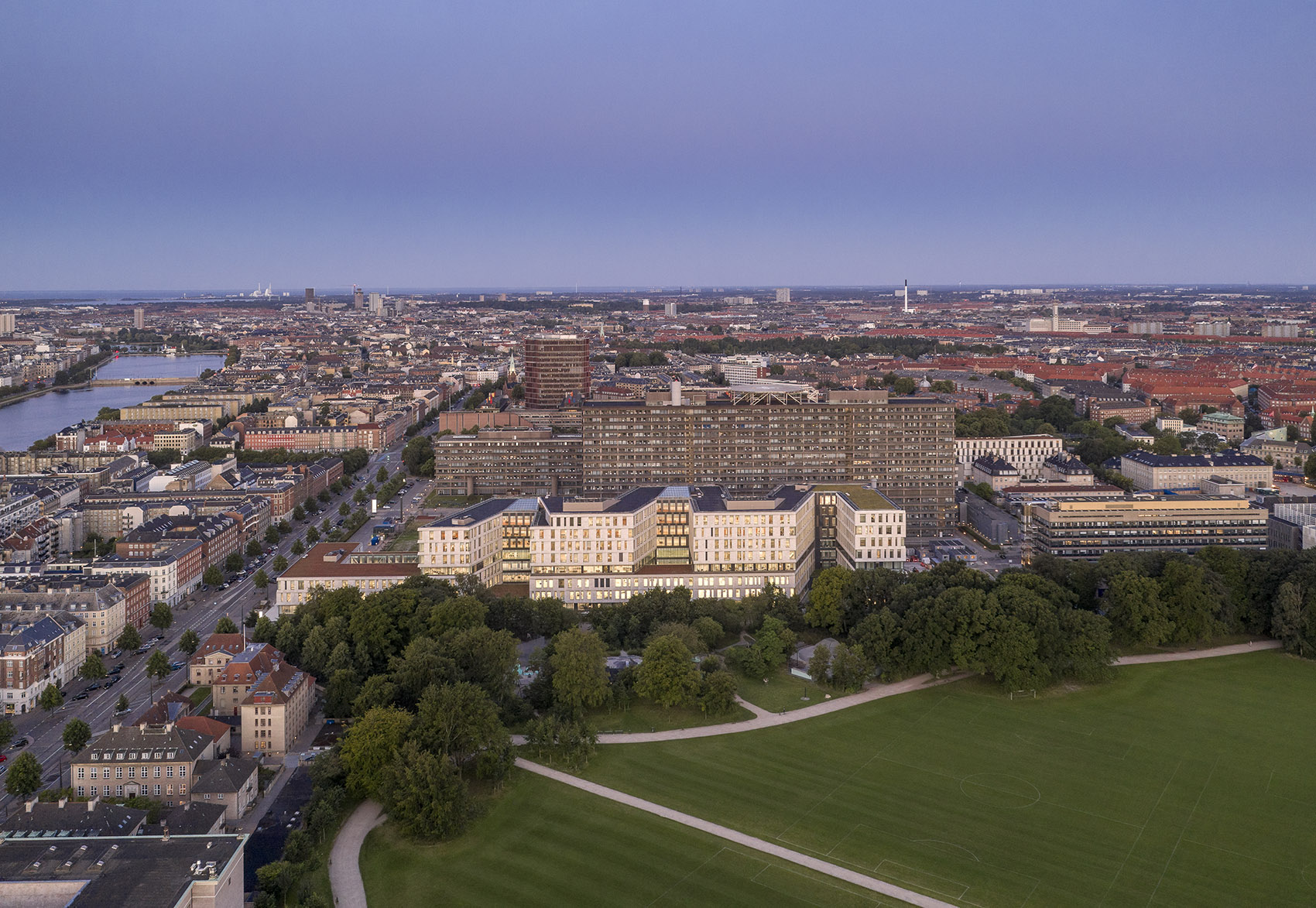
“北翼的开放令人激动。这是迈向更加现代开阔的Rigshospitalet医院的一大步。从项目的设计到施工,建筑师、工程师、承包商在室内设计、工作流线以及病人需求等方面一直保持了紧密的合作。我们希望创造一座拥有最高品质的新医院,满足当下需求的同时,为未来可能发生的改变做好准备。”Regshospitalet负责人Fer Christiansen说道。
“We are excited that the North Wing is now open. It is a big step forward towards an even more modern and spacious Rigshospitalet. From project engineering to construction, we have consistently had a constructive collaboration with the architects, engineers, and contractors regarding the interior design, workflow, and patient needs. We are looking forward to moving into a new hospital that meets the highest standards, ready to meet the needs of today and the changes of the future”, says Per Christiansen, the Director of Rigshospitalet.
▼一条主轴线贯穿折线建筑,main axis running through the entire zigzag wing ©Adam Mørk
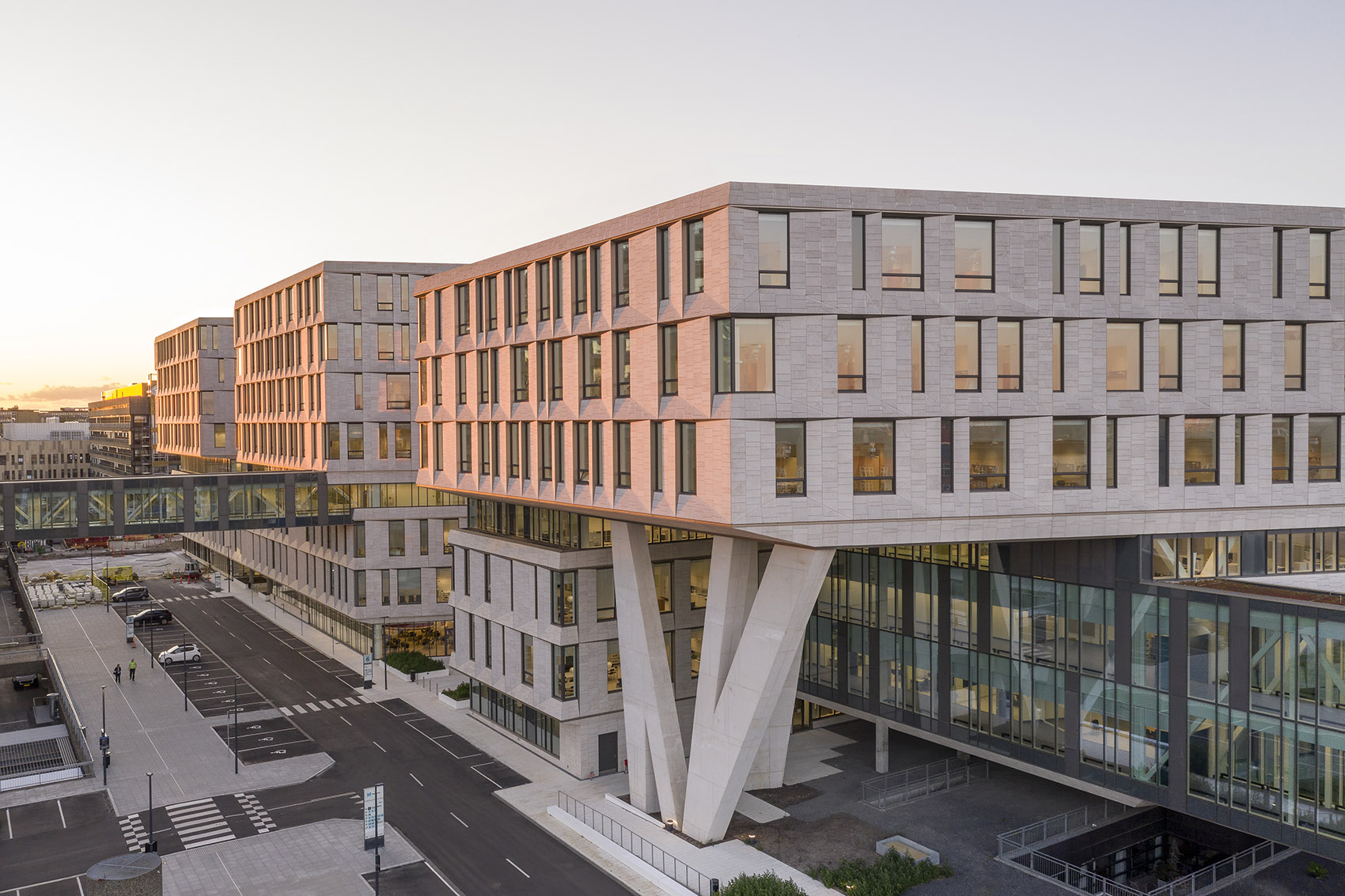
北翼与周边环境相融合,同时呈现出自身的建筑特征。建筑的尺度从西北到东南逐渐缩小,其多变的外形是对城市空间适应的结果。面向原有医院高楼的建筑较高,然后逐渐降低,以呼应马路对面传统的哥本哈根式住宅。面向Fælledparken的立面以轻盈开放的玻璃幕墙取代实体墙面,与公园形成对话。
The North Wing relates to its surroundings while still asserting its own unique architectural expression. The dynamic form of the North Wing adapts to the surrounding urban space, gradually lowering in scale from north-west to south-east. This means the building is taller towards the high-rise buildings of the existing hospital, while respectfully lowering down towards the classic Copenhagen-style residential buildings across the road. The façade towards Fælledparken is light and open and enters a dialogue with the park rather than forming a solid wall.
▼建筑立面,与公园呼应,facade of the building having dialogue with the park ©Adam Mørk
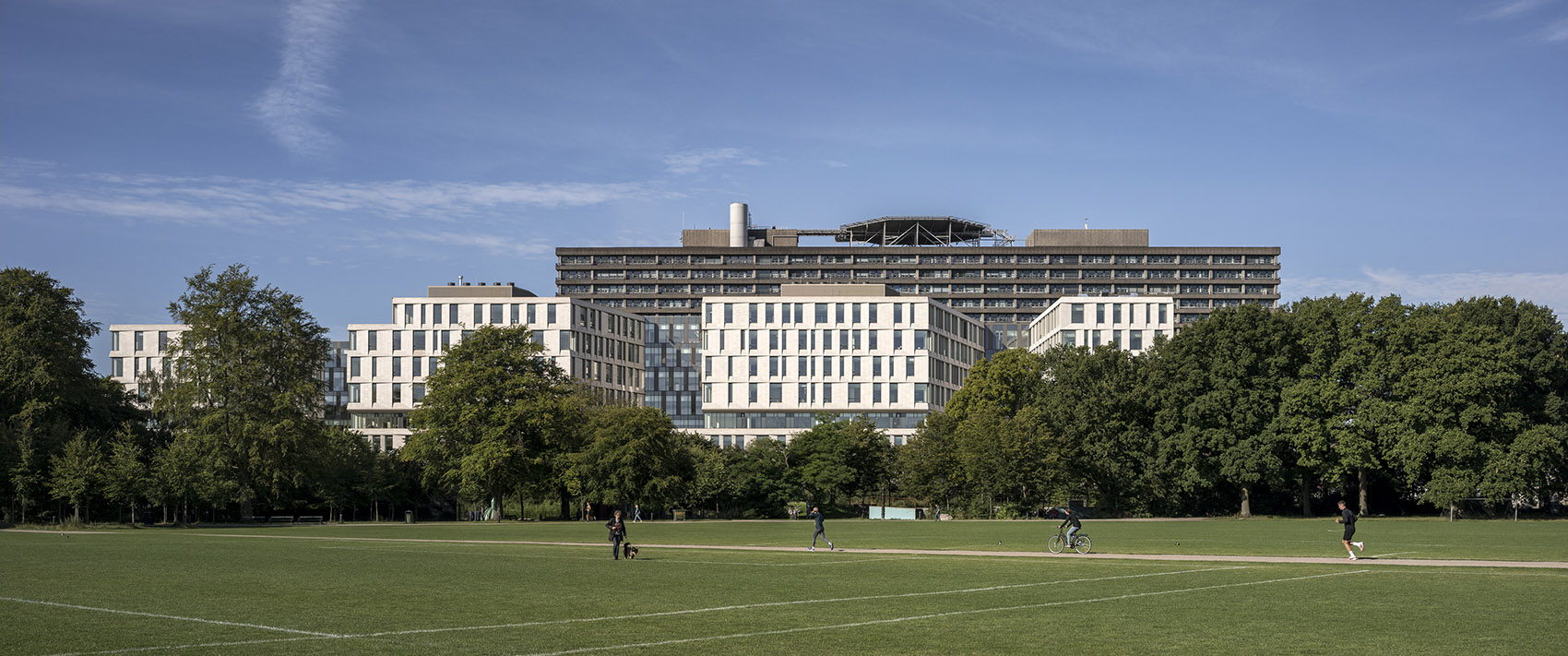
▼折线形建筑适应城市空间,zigzag building corresponding to the city space
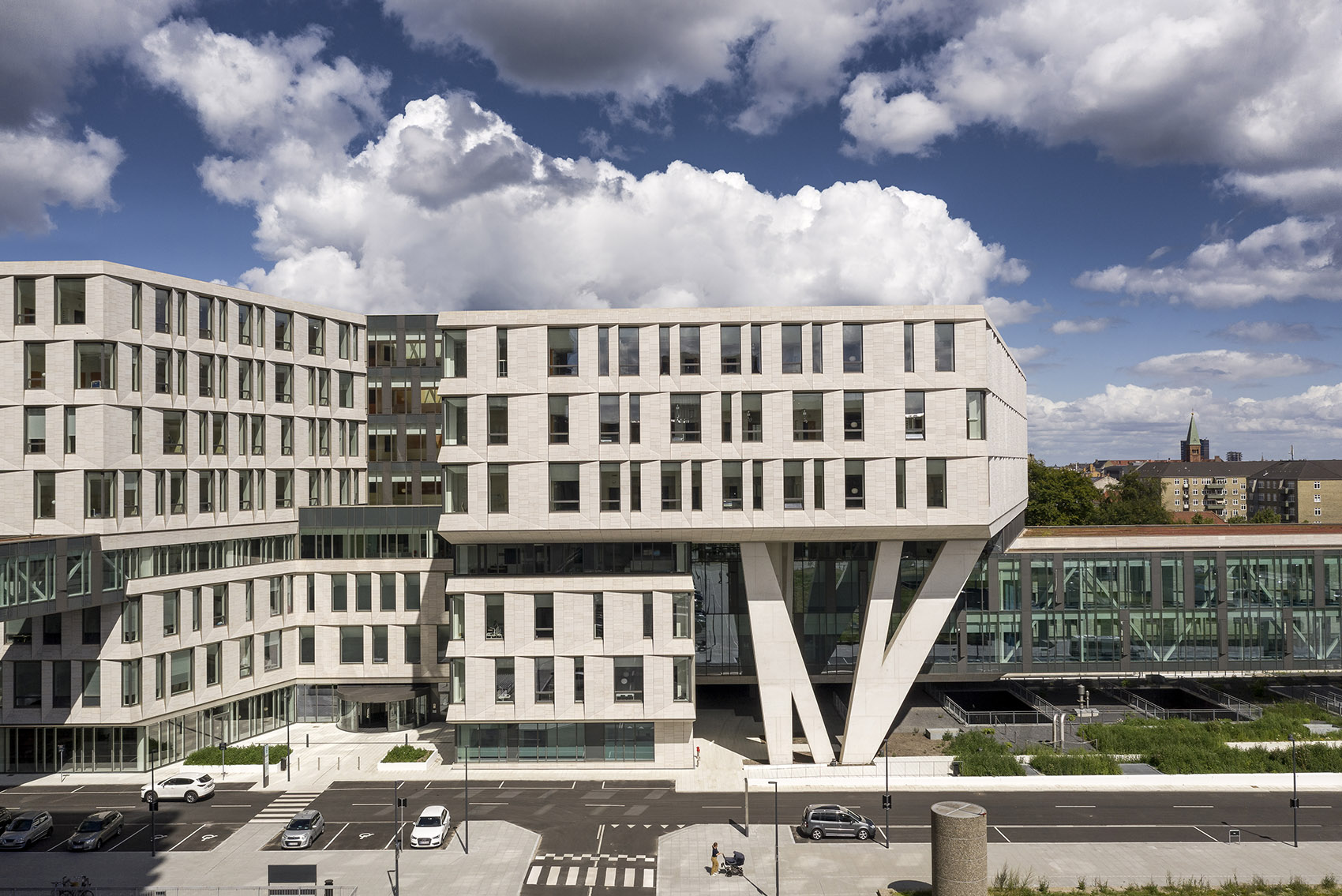
▼建筑的尺度逐渐变化,靠近居住街道的楼房更加低矮,scale varies in the building, lower toward the residential street ©Adam Mørk

▼建筑街景,view of the building from street ©Adam Mørk
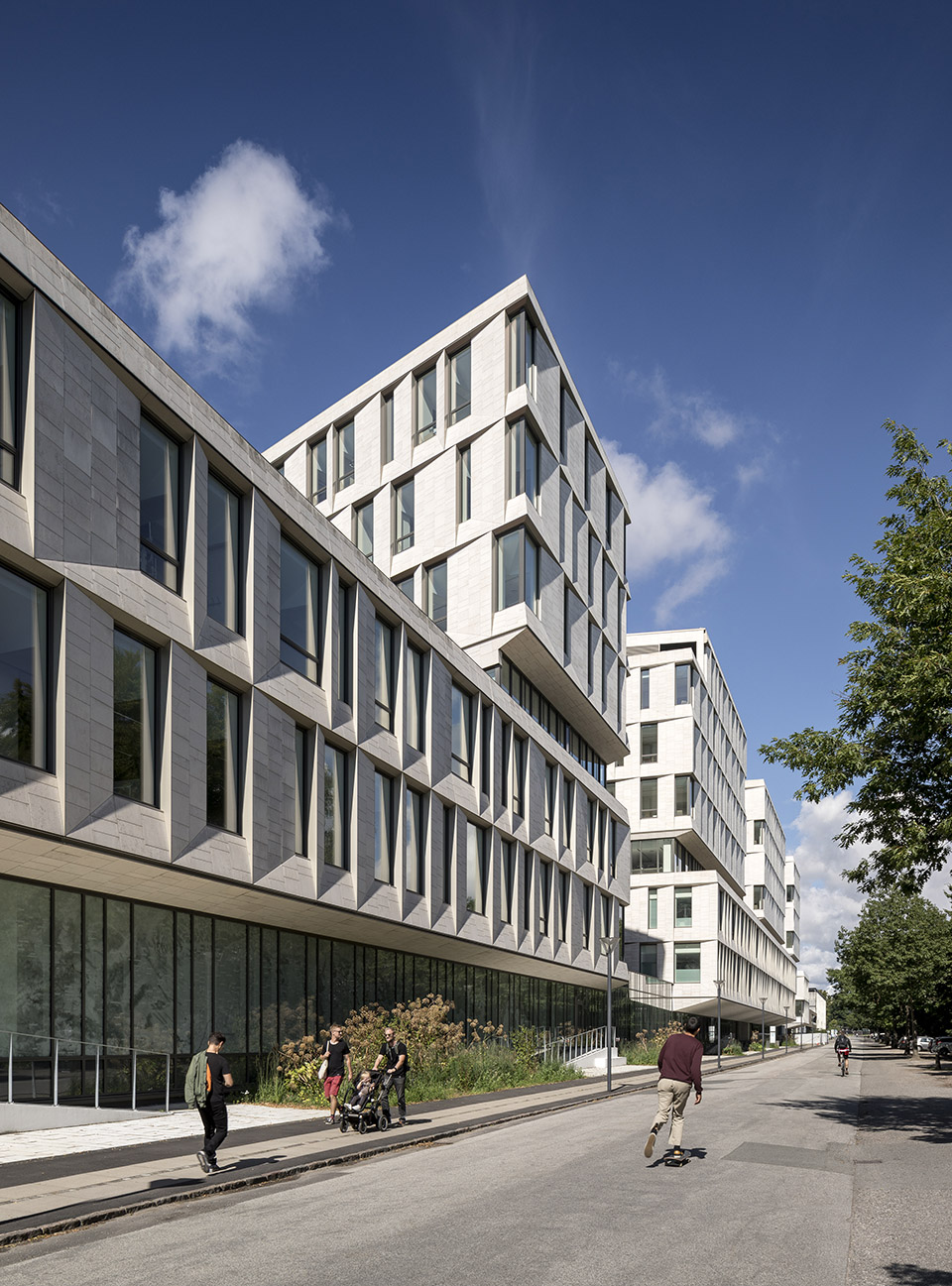
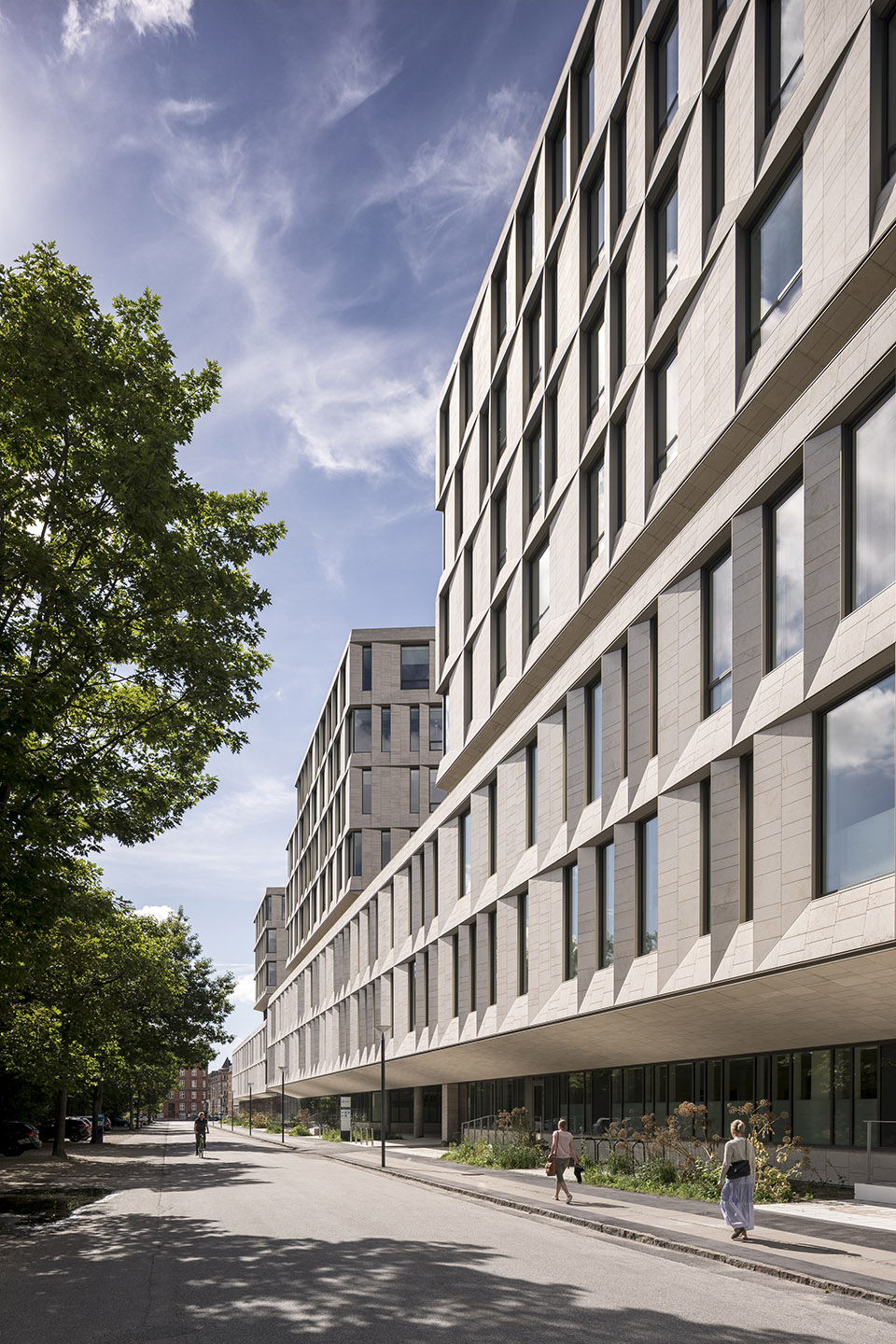
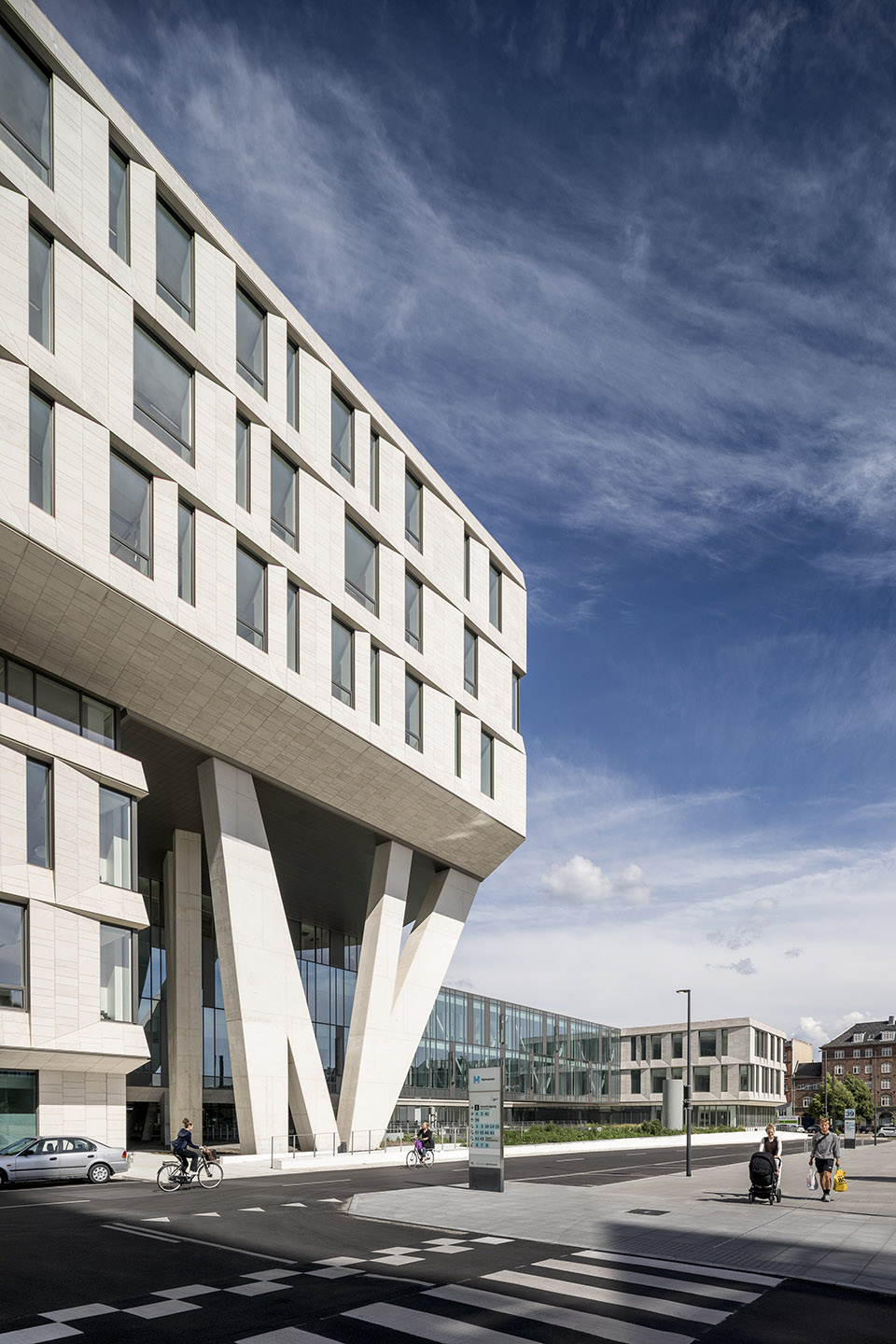
康复是北翼中每层空间的首要设计原则。巨大的玻璃窗让阳光倾泻而入,让室内空间与相邻的Fælledparken公共公园产生联系。充满自然光的室内空间和四周盎然的绿意共同为病人和家属创造了一个平和的环境,使医院变成了一个令人愉悦的目的地,为病人提供治疗和康复的理想条件。
Healing architecture has been a guiding principle at all levels of the North Wing. The large glass windows let daylight flow into the building and create a connection between the interior spaces and the neighbouring public park Fælledparken. The daylight-filled space inside the North Wing and the green surroundings help create a peaceful environment for patients and relatives. The result is a hospital building that is pleasant to visit, while providing the patients with optimal conditions for recovery and well-being.
▼明亮通透的立面,bright and open facade ©Adam Mørk

折线形的造型可以有效利用自然光线,通过减少人工照明的使用达到节能的目的。立面采用自然的浅色石材,形成明亮而又平易近人的外观。丰富的折面让建筑的外观更富活力,随着一天中的光照变化投下不同角度的阴影。
The characteristic zigzag design of the North Wing helps to harness natural daylight and save energy as artificial lighting is minimized. A natural light stone was chosen for the façade to give it a bright and welcoming appearance. Facets in the façade add a form of shade as well giving the building’s exterior a more vibrant expression that changes throughout the day and from different angles.
▼丰富的立面造型和细部,rich details of the facade ©Adam Mørk
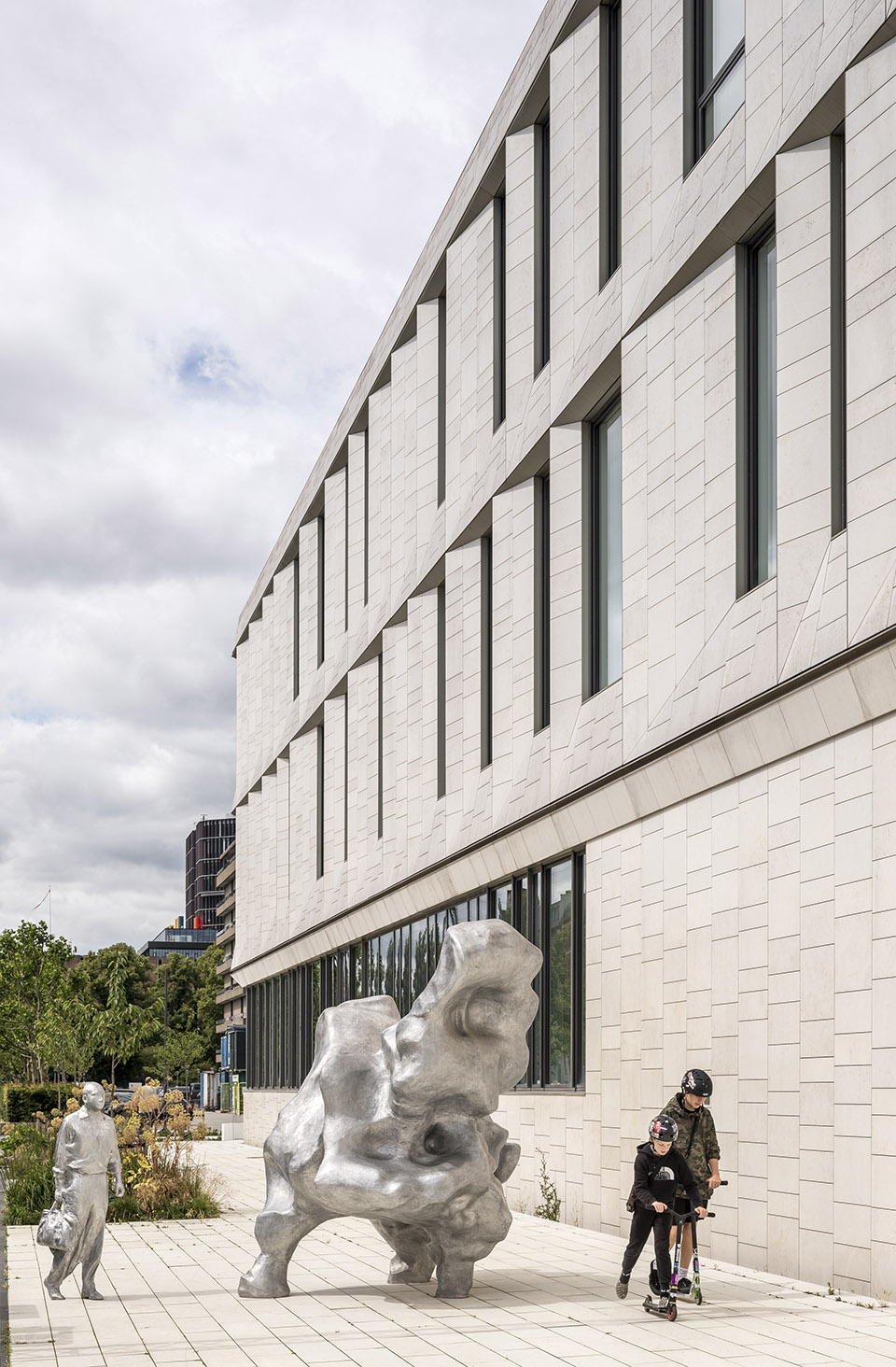
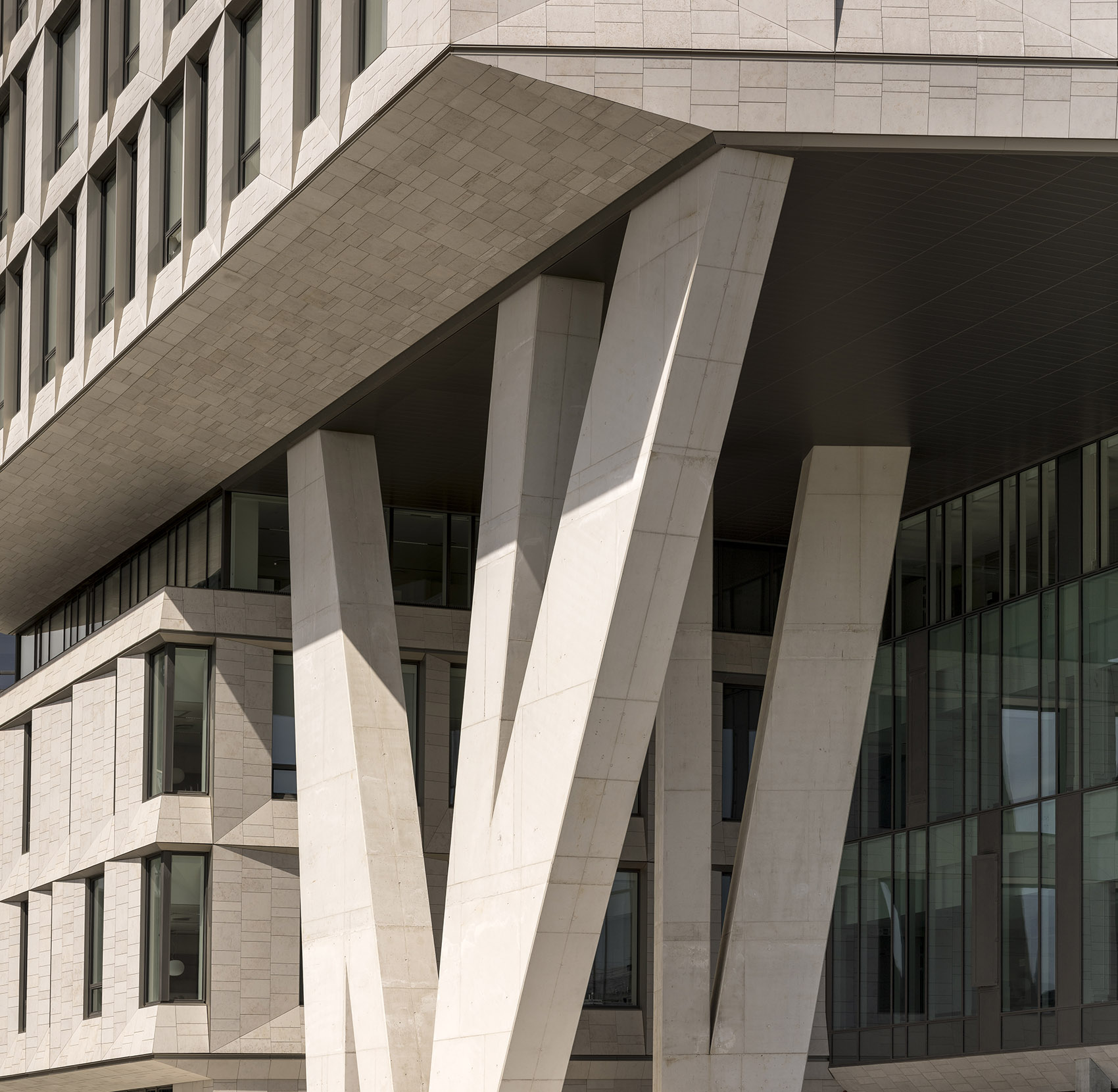
门诊诊所与病房由连续的轴线连接,分布在三层楼中。到达区域主要供白天的病人使用,术前术后区则设置在手术室旁边。两座旋转楼梯和四座中央电梯井将不同楼层和中部公共区域连接在一起。楼梯位于开放的前庭,阳光透过玻璃天花和巨大的玻璃立面涌入空间。每层楼上的公共等候区都与楼梯相连。为了帮助辨认方向,每层楼上的门、地板和部分墙面都使用了自己的代表色。
Wards and outpatient clinics are laid out over three floors and are connected by a continuous axis. Arrival areas are optimised for day patients, while the pre- and postoperative areas are placed next to the operating areas. Two spiral staircases and four central elevator towers connect the floors to the central common area. The staircases are located in the open atria, where daylight flows into the building from the glass ceiling, as well as through large glass sections in the façade. Common waiting areas are established in connection to the two staircases on each floor. To help orientation, each floor has its own dedicated colour scheme applied to doors, flooring, and selected walls.
▼旋转楼梯,spiral staircase ©Adam Mørk
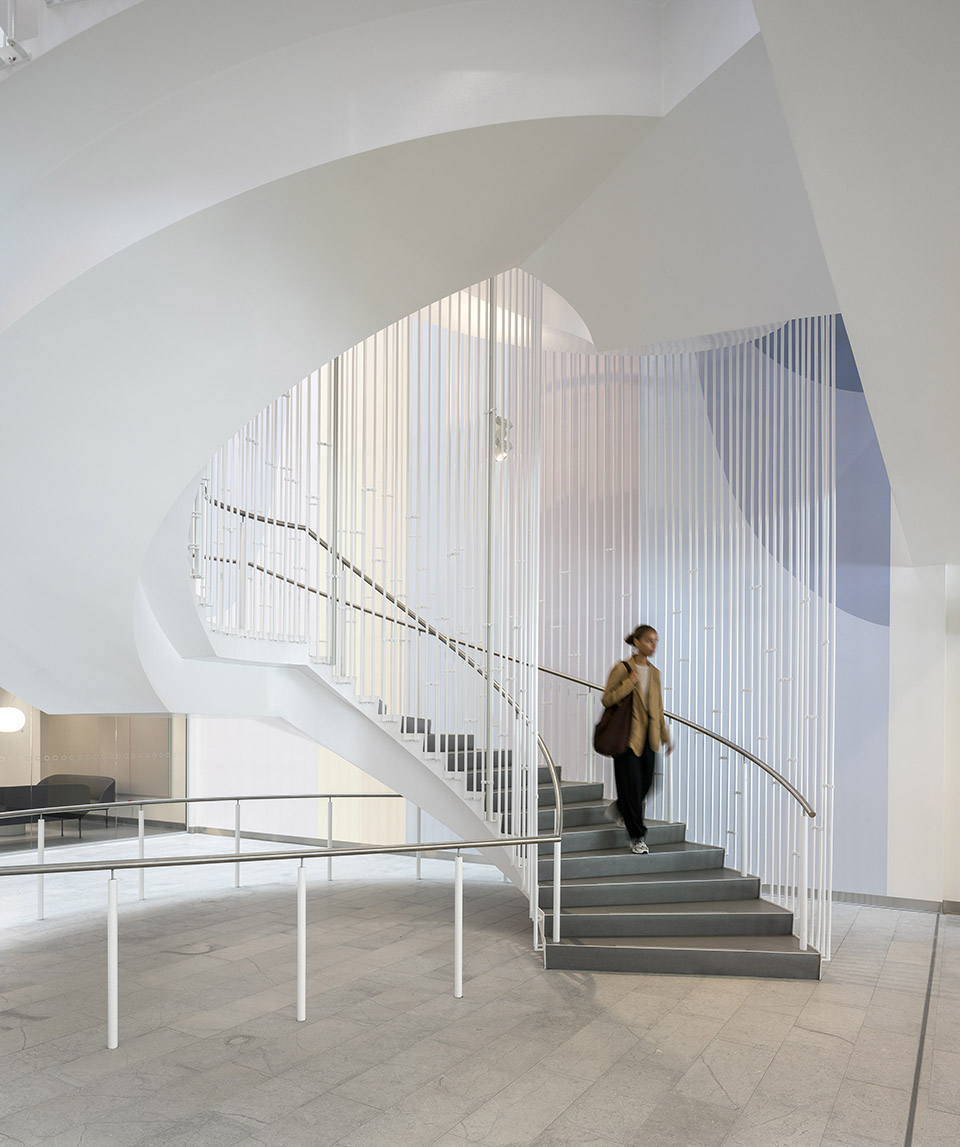
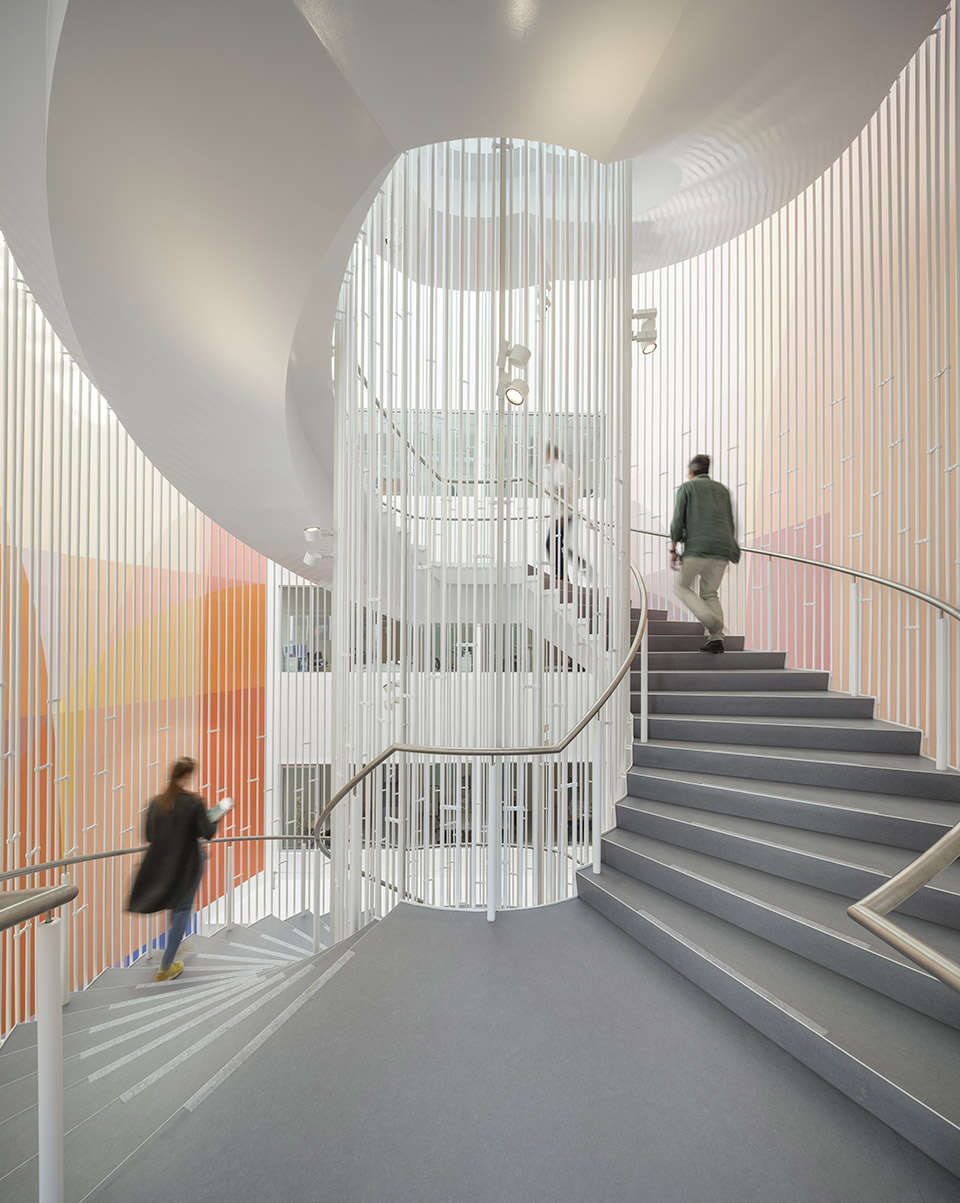
▼艺术作品为空间增添颜色,artworks bringing colors to the space ©Adam Mørk
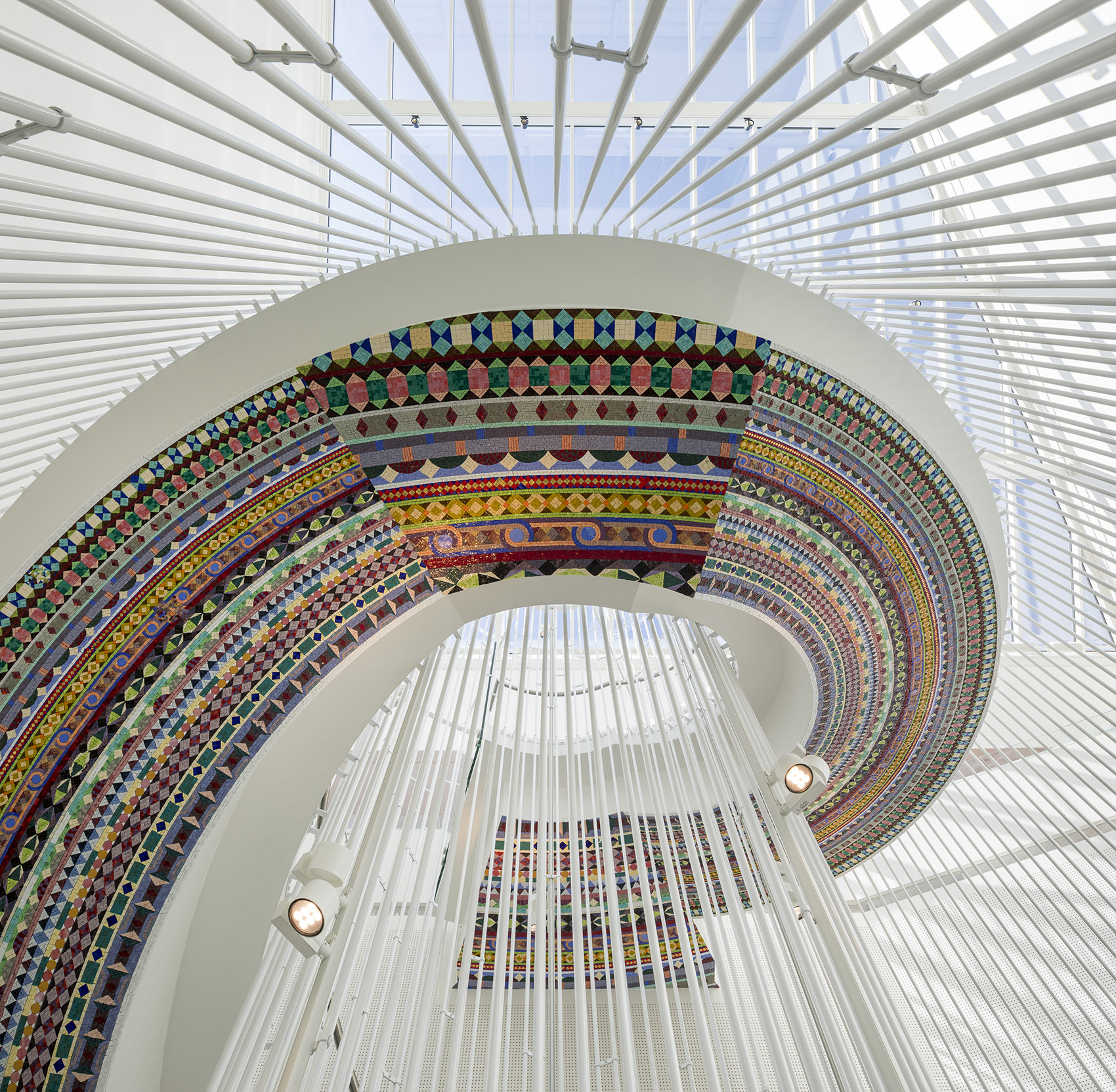
Olafur Eliasson, Malene Landgreen和Erik A. Frandsen的艺术作品为建筑带来了色彩和生命,让传统清洁单调的医院环境变得更为柔和。设计师用巧妙的方法将艺术作品布置在前庭中,尽可能让更多人欣赏,包括室外路过的行人。
Artworks by Olafur Eliasson, Malene Landgreen, and Erik A. Frandsen bring colour and life into the building, softening the traditionally sterile hospital environment. The artworks exhibited in the atria are strategically placed to be enjoyed by as many people as possible, including passing pedestrians from outside.
▼设置在前庭的艺术作品,让更多人可以看到,artwork in the atria, making visible to more people ©Adam Mørk
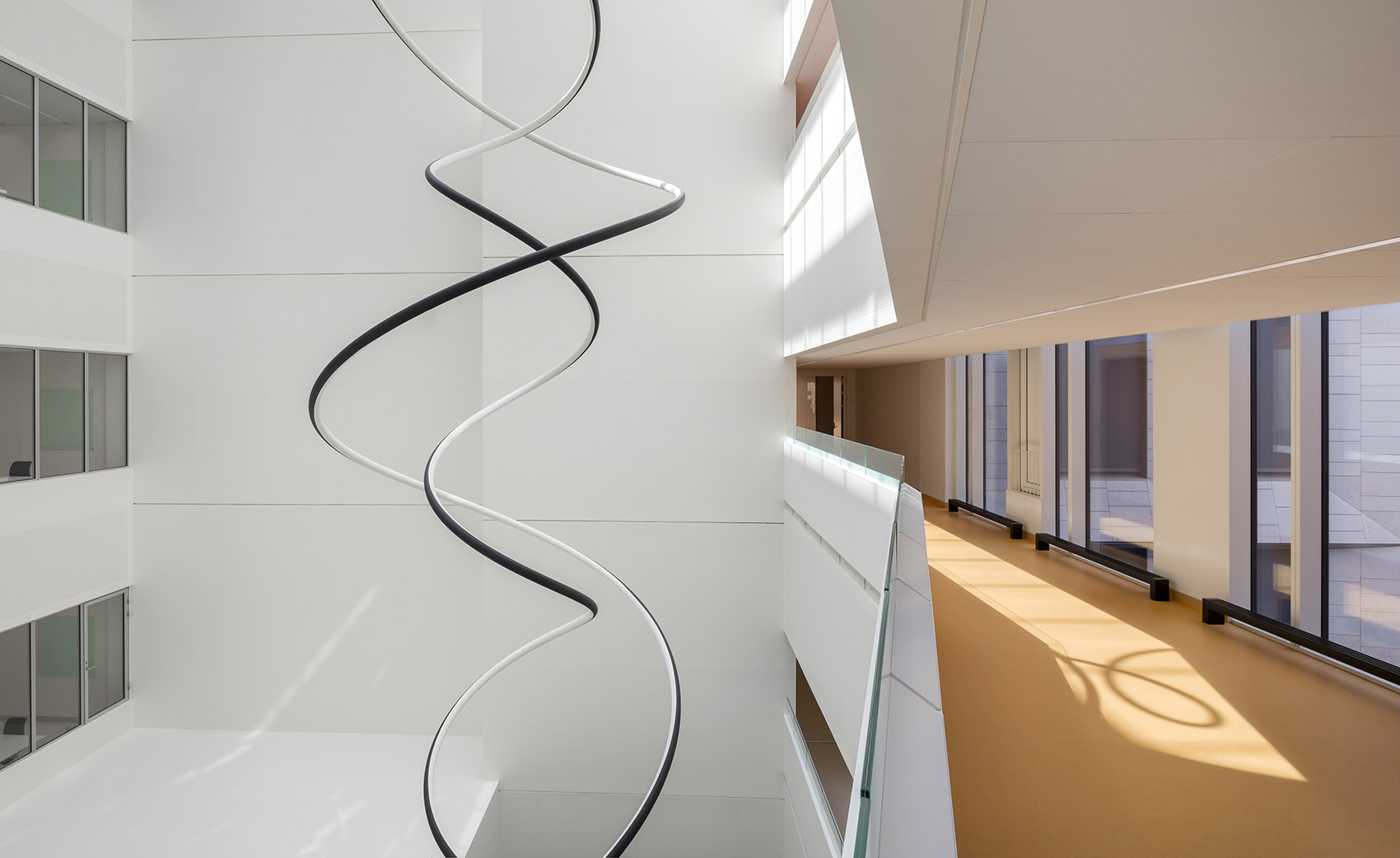
▼艺术品细部,details of the artwork ©Adam Mørk
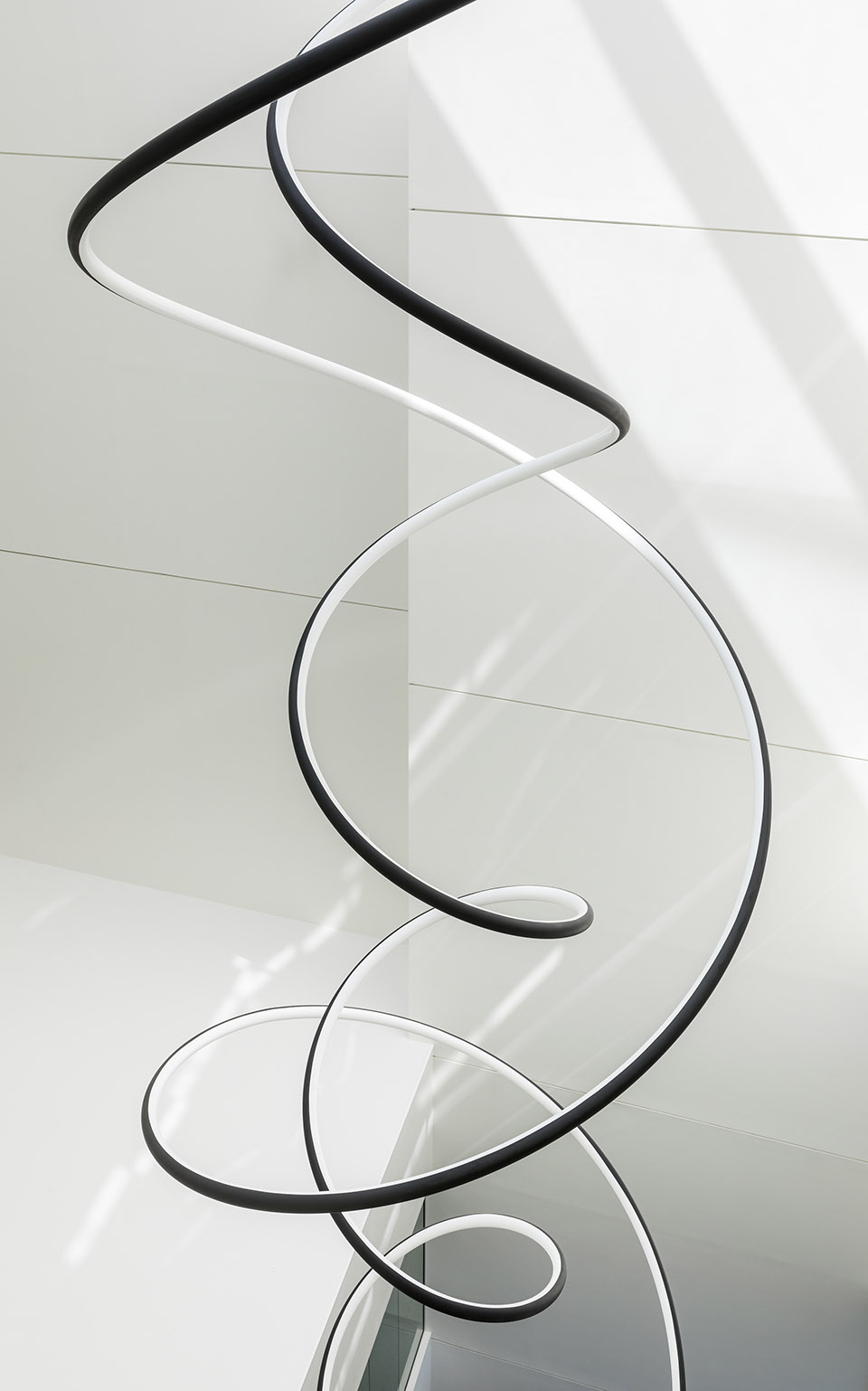
北翼建筑特征鲜明,开放、通透、安全并且人性化。同时,它还创造了一座灵活多变的医院,能够适应未来的操作需求,可以持久留存。新的治疗方法和电子创新持续挑战着现有的医院设施。因此,北翼围绕简单的原则设计,从而形成巨大的灵活性,可以根据未来的使用需求调整空间。
The North Wing has a strong expression, conveying openness, transparency, safety and humanism – while at the same time creating a long-lasting, flexible hospital that can adapt according to future operational needs. New treatment methods and digital innovations continue to challenge existing hospital settings. The North Wing is therefore designed around simple principles that provide great flexibility and space for adjustments according to future needs.
▼病房,ward ©Adam Mørk
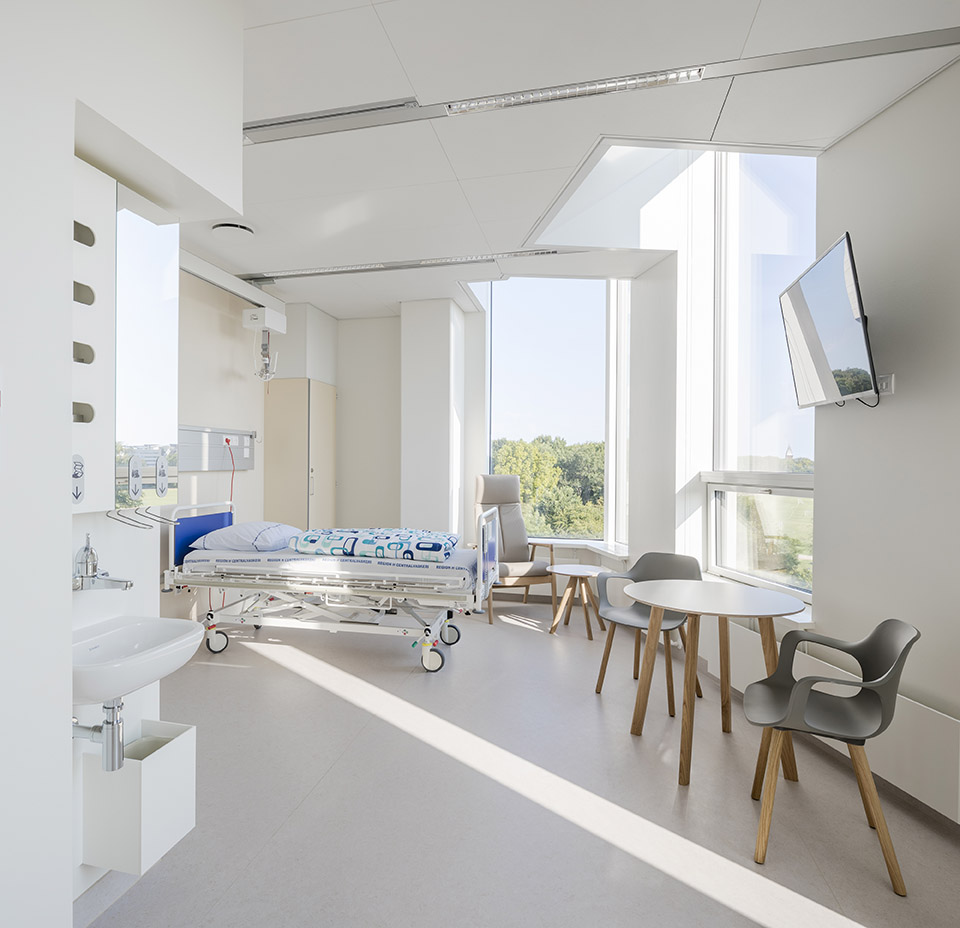
▼简洁空间适应治疗需求,simple space adapts to operational needs ©Adam Mørk
